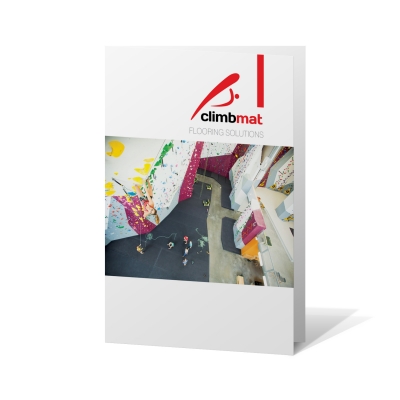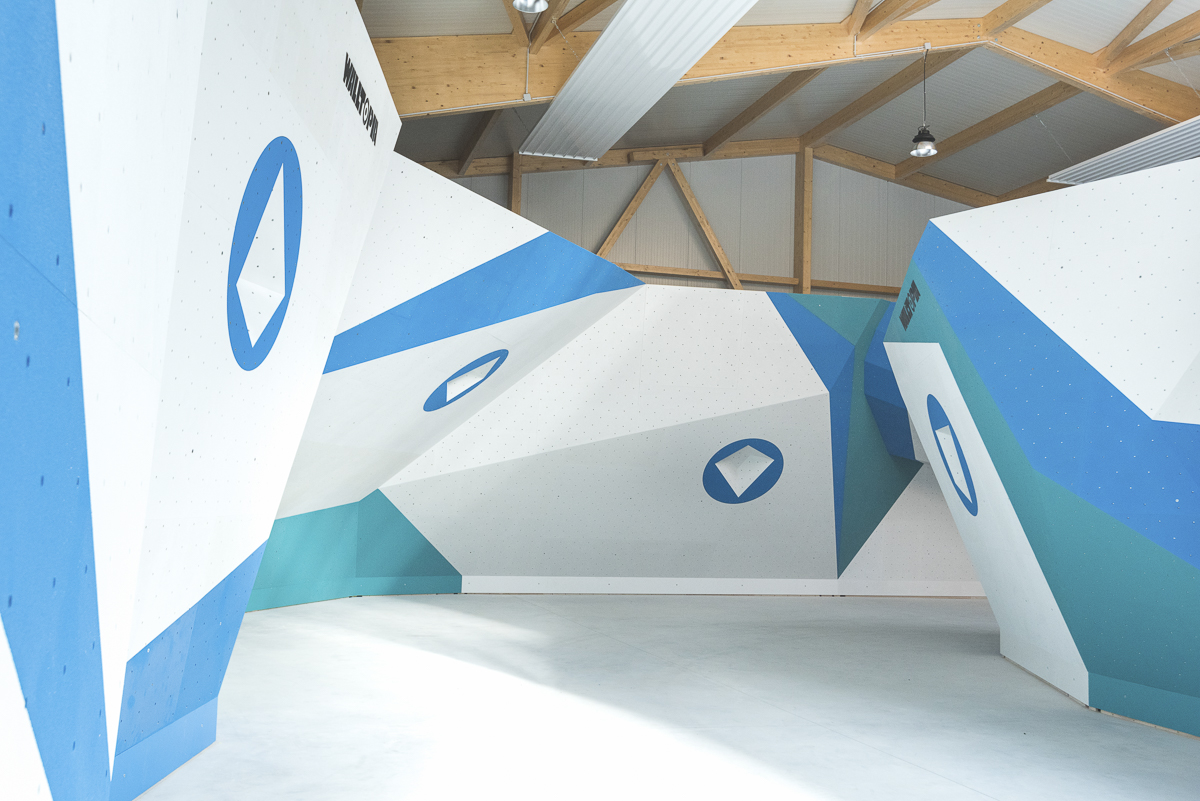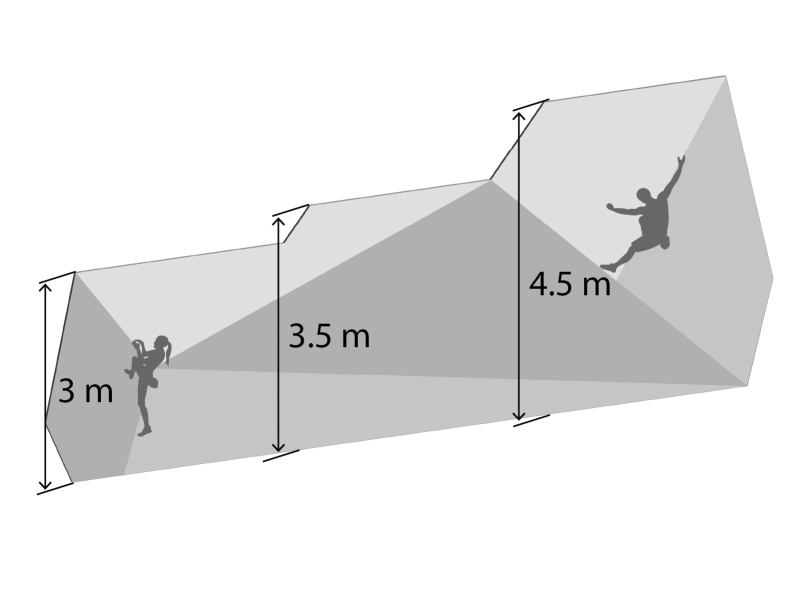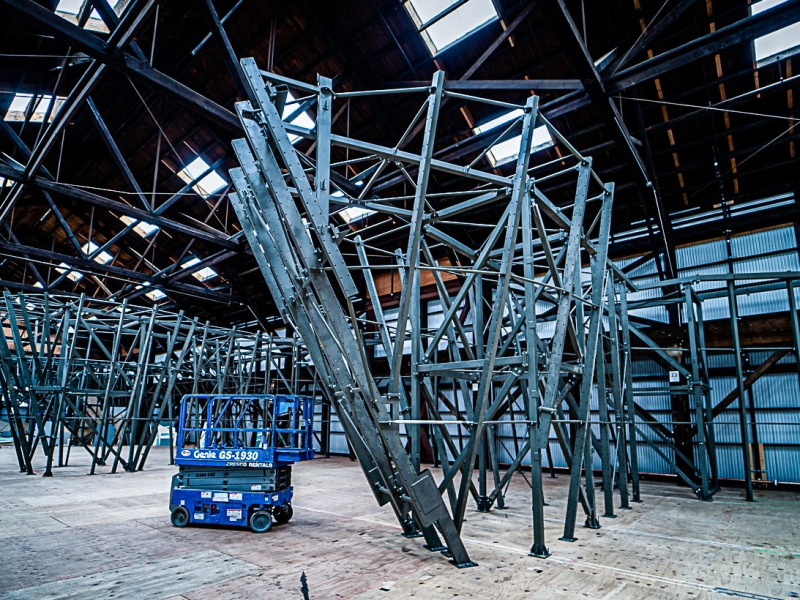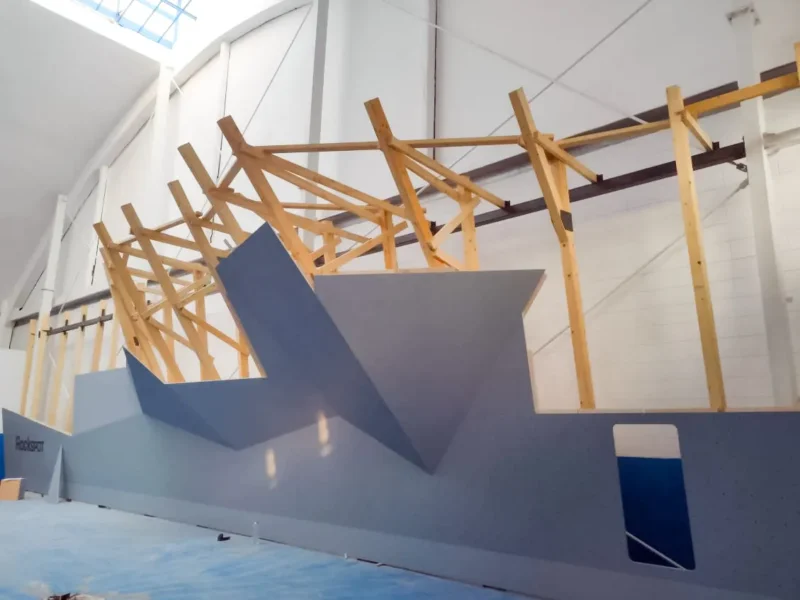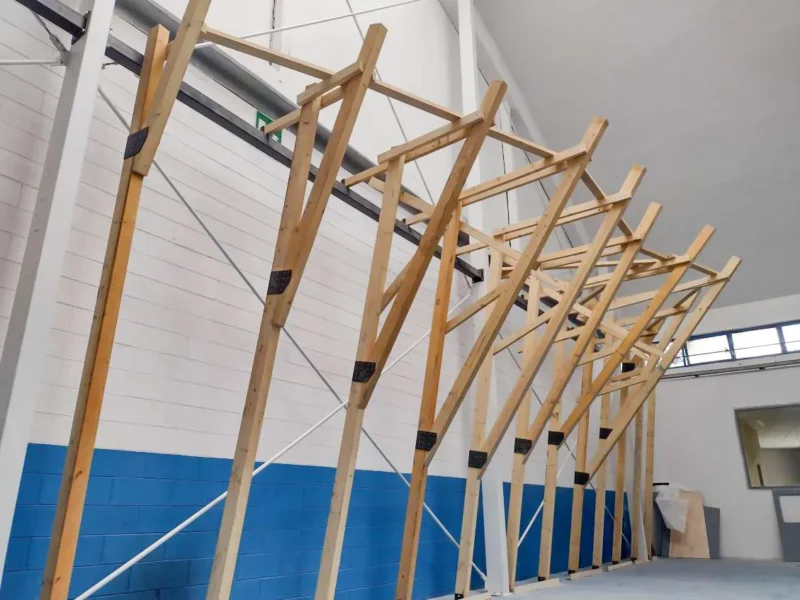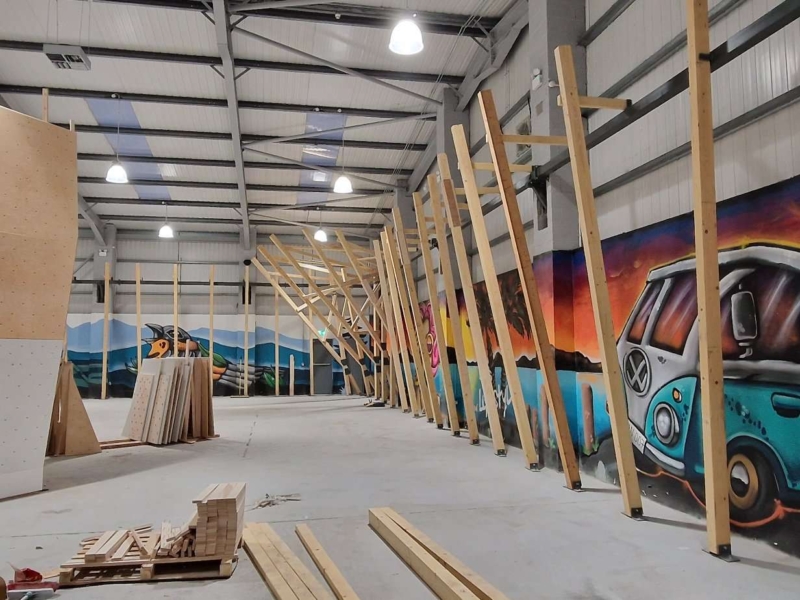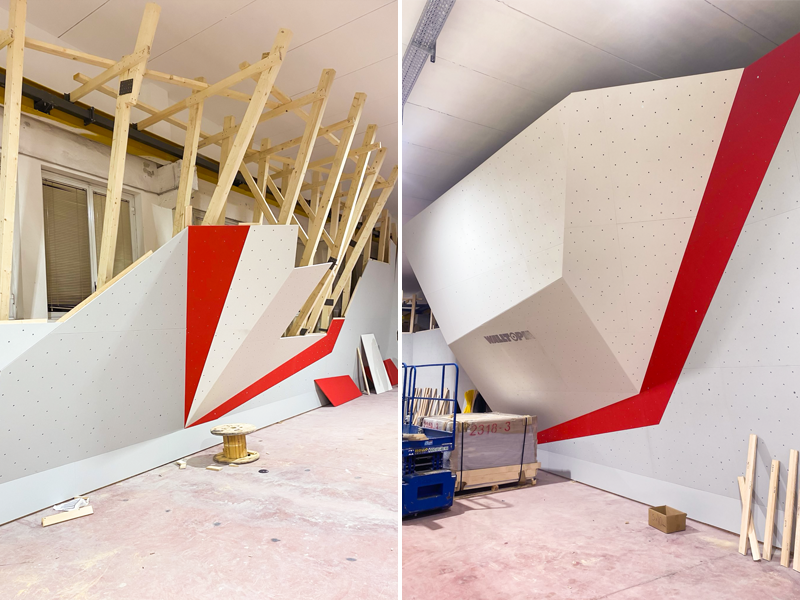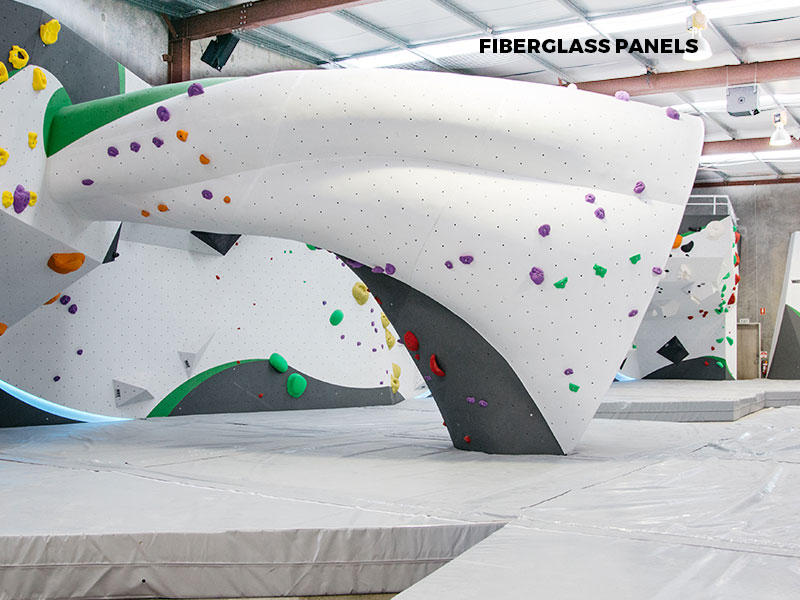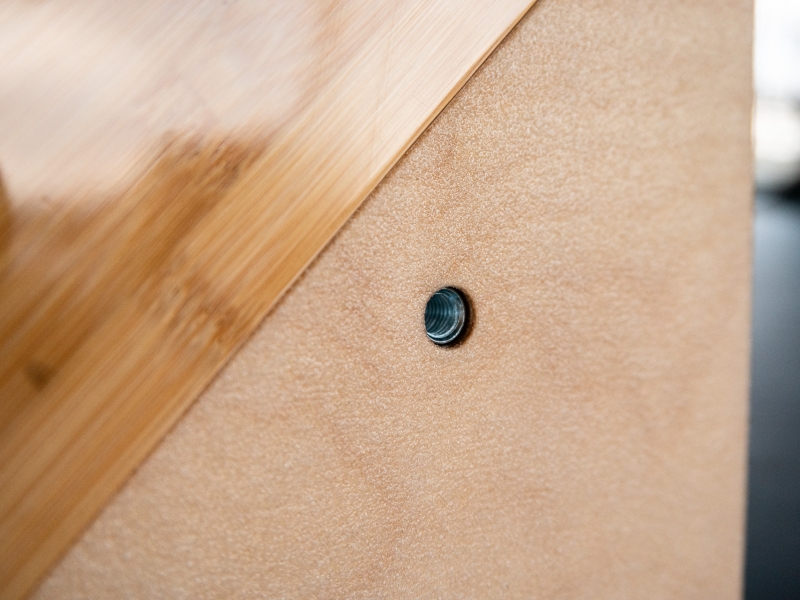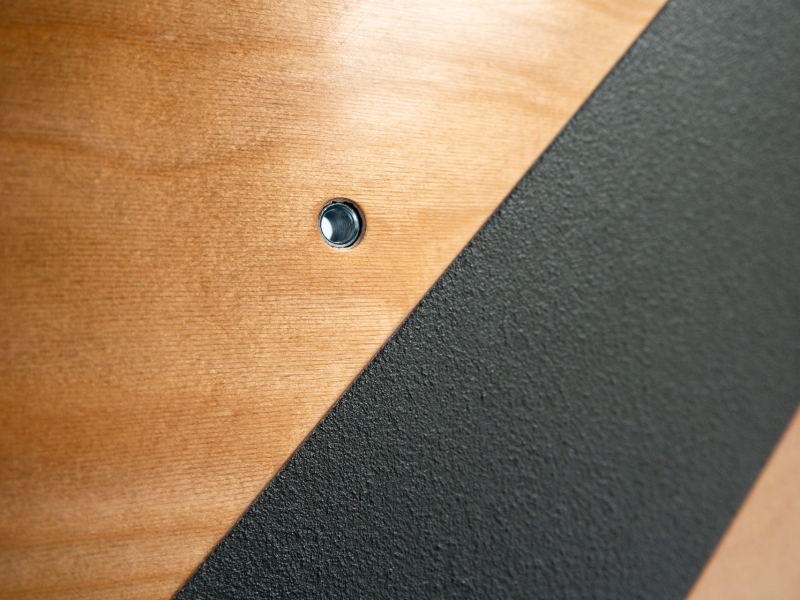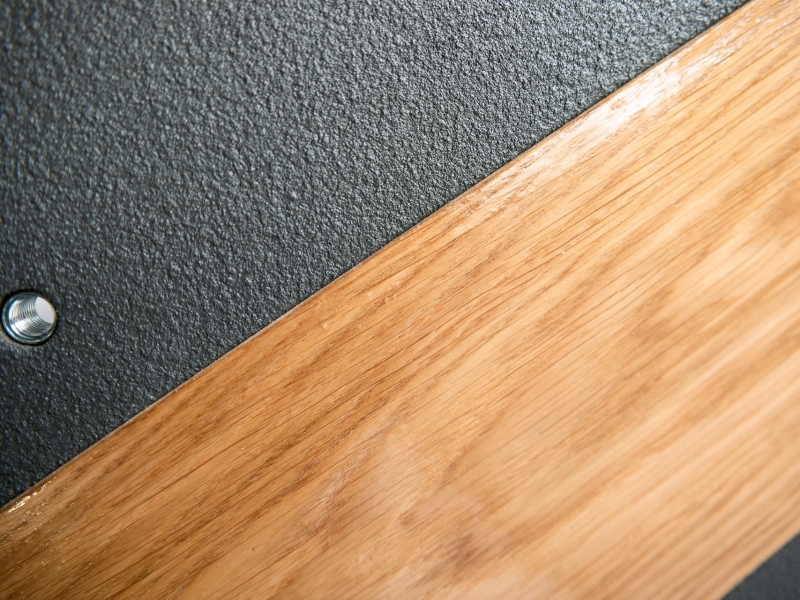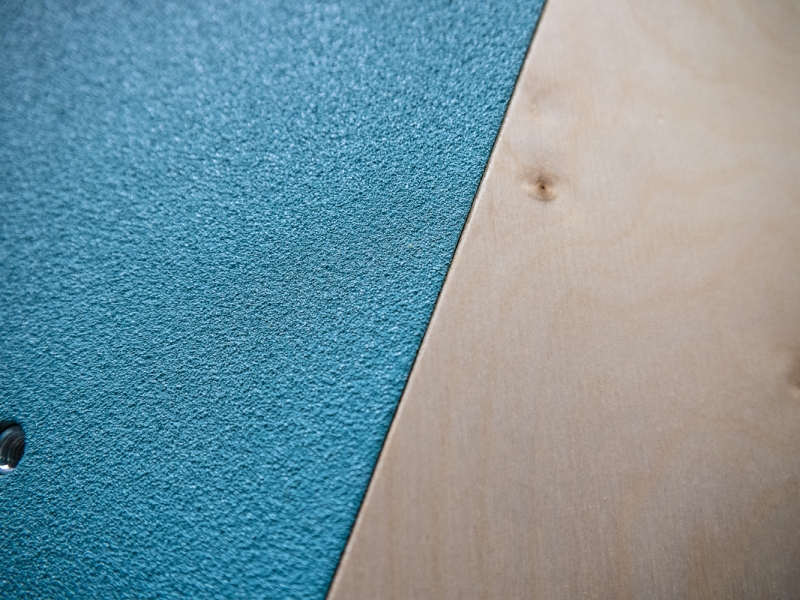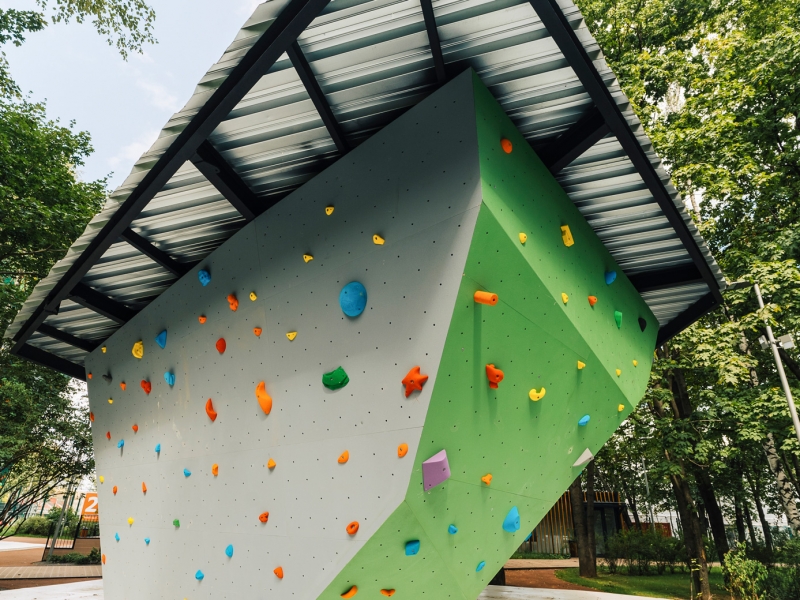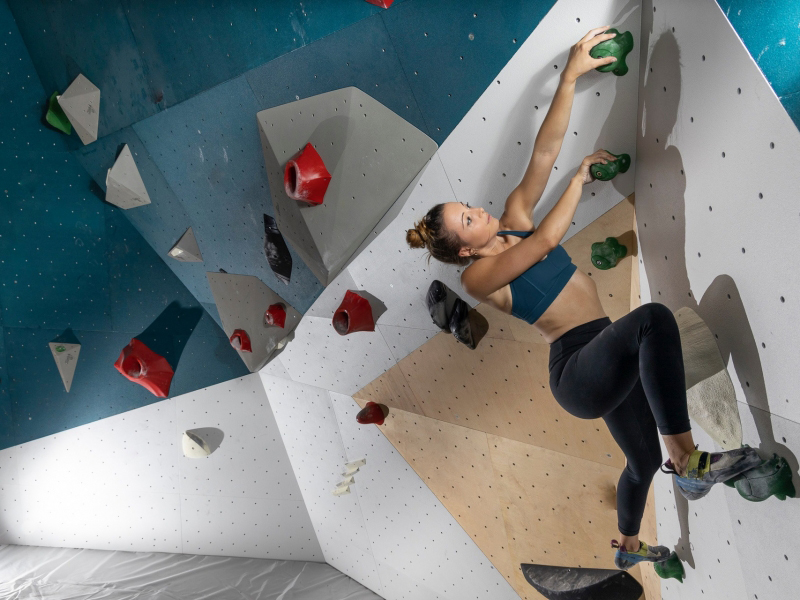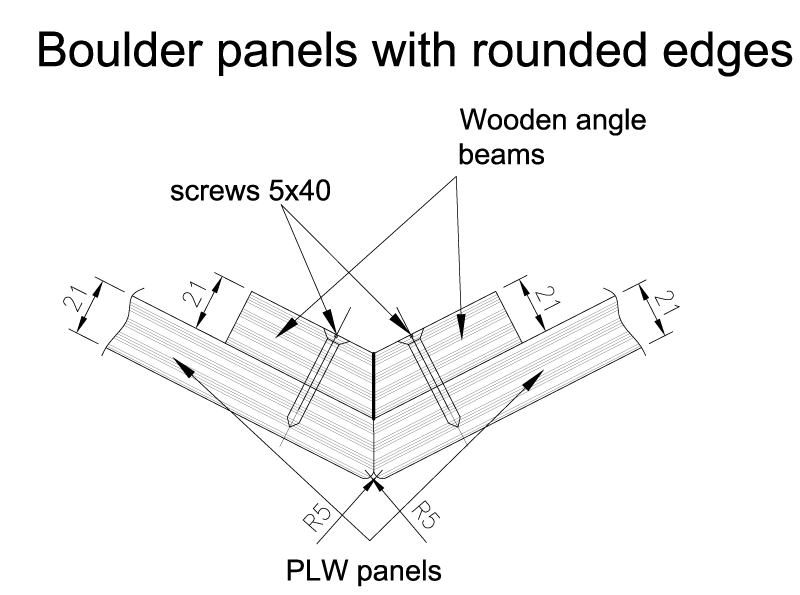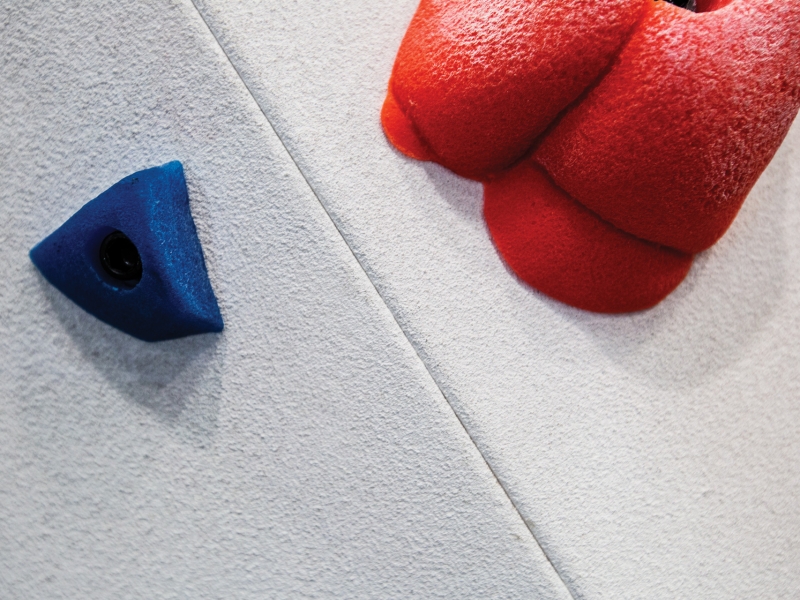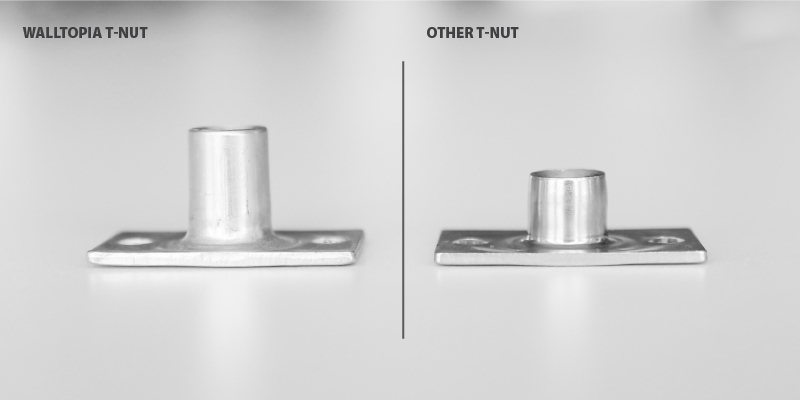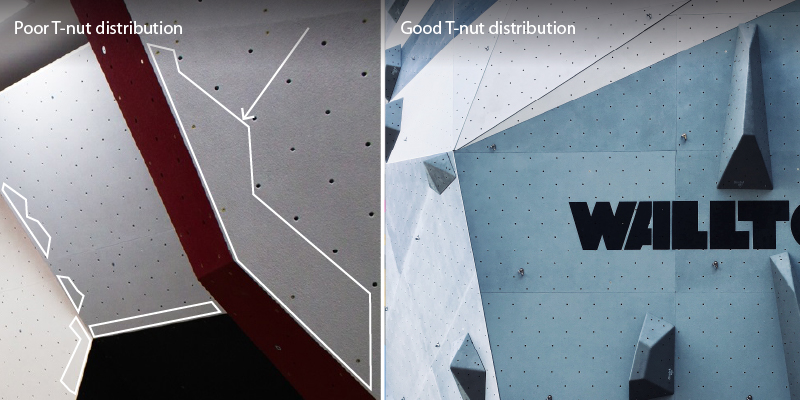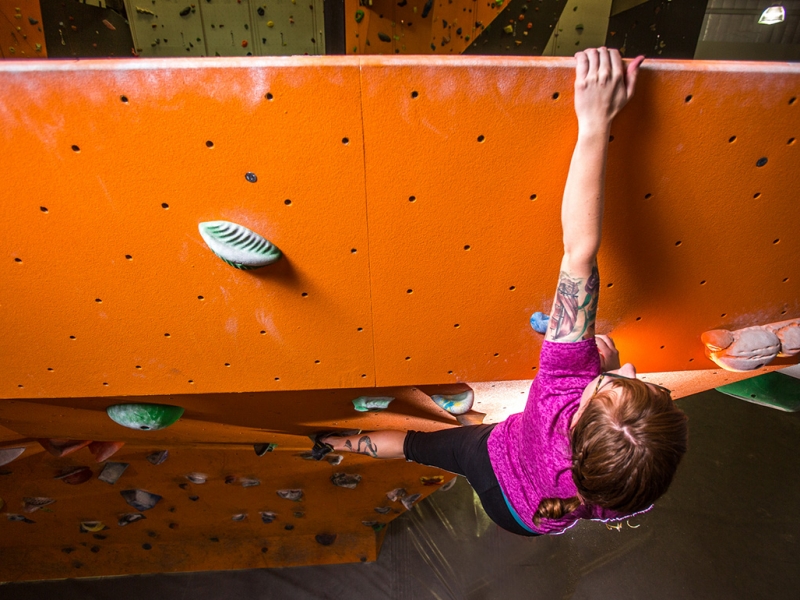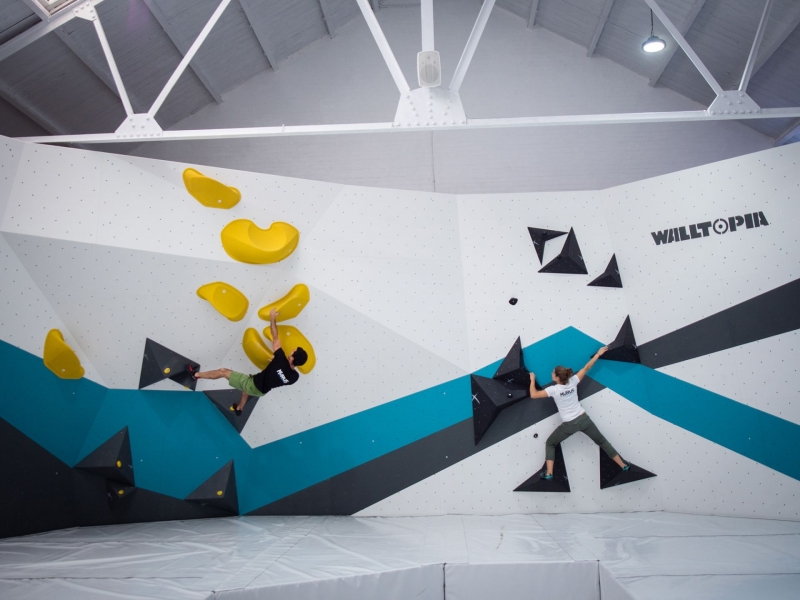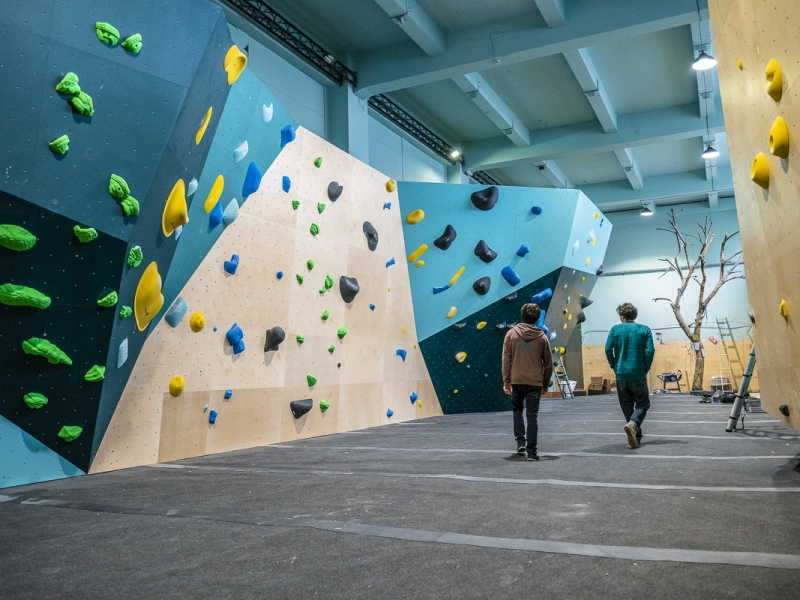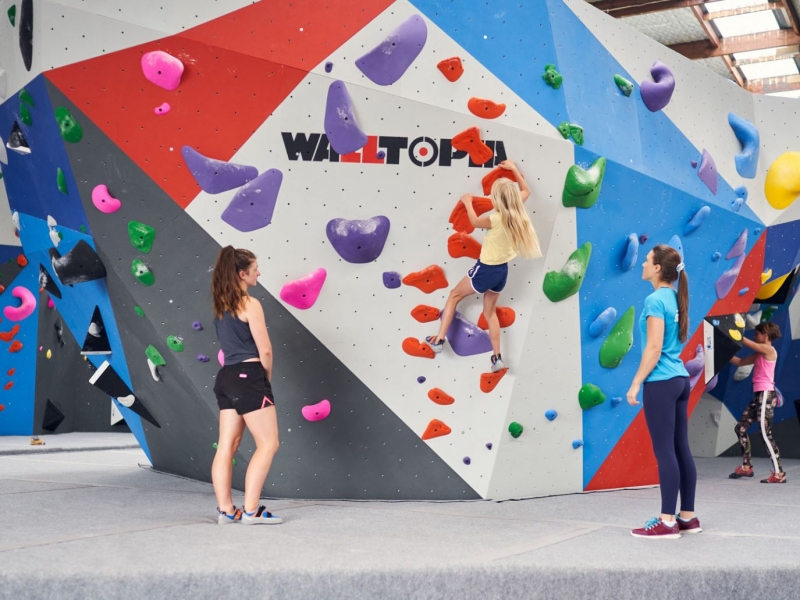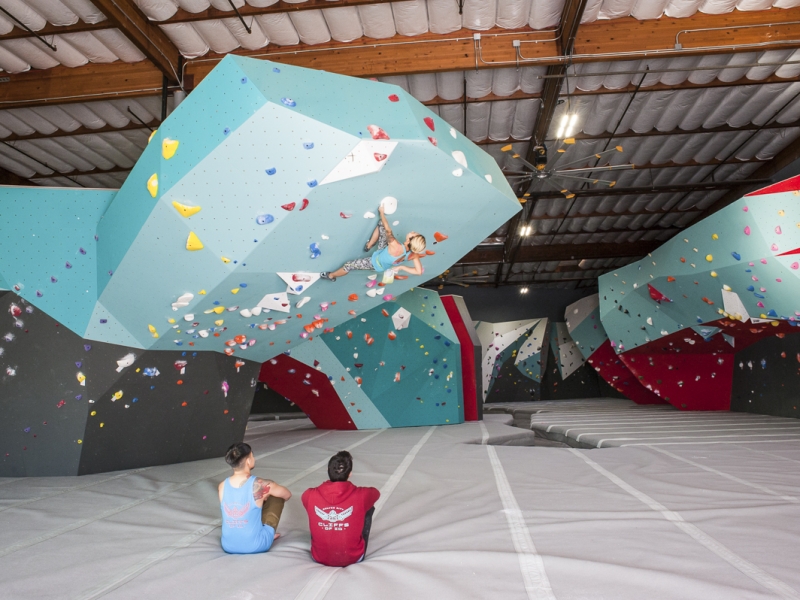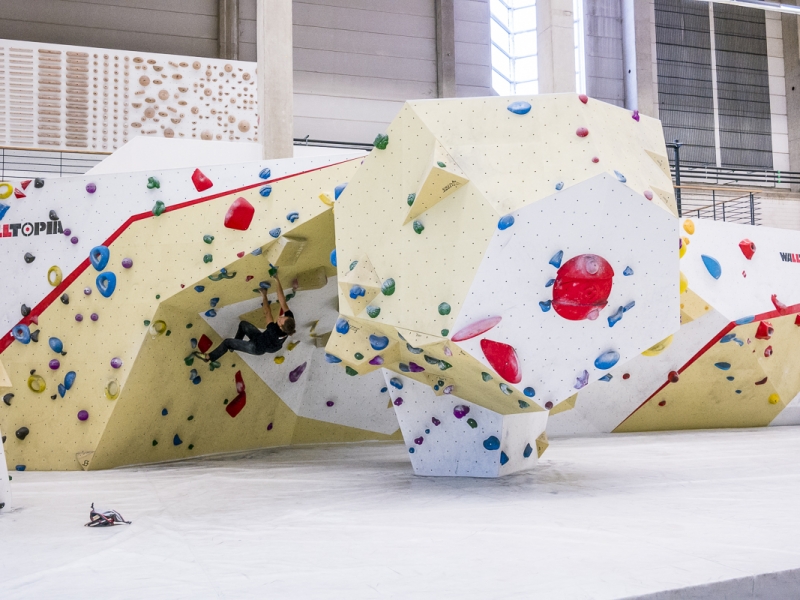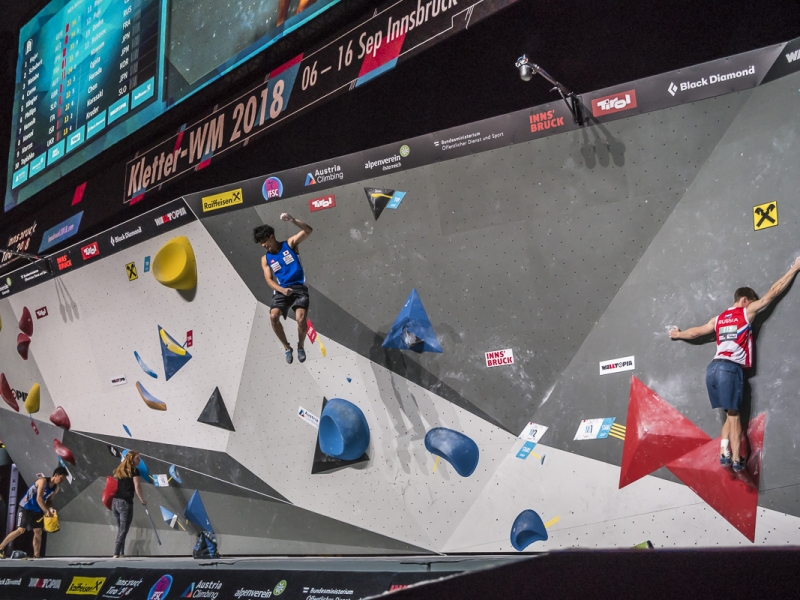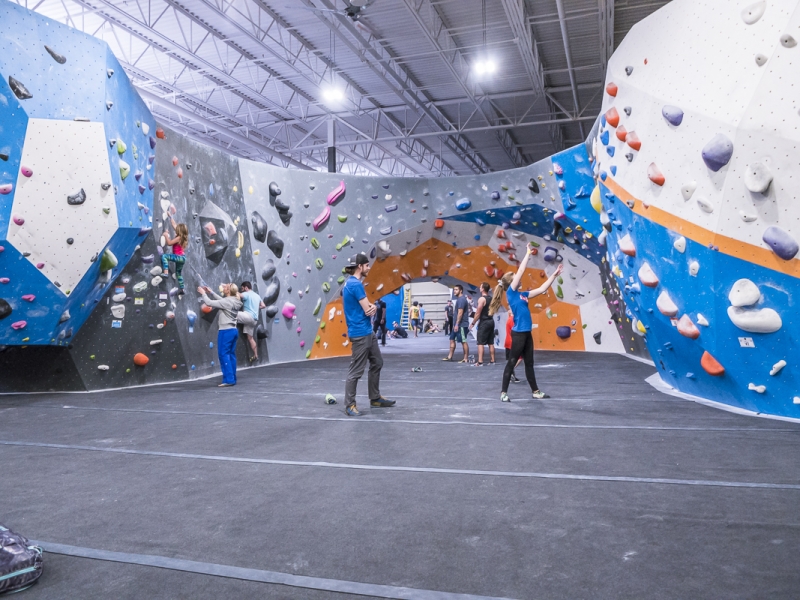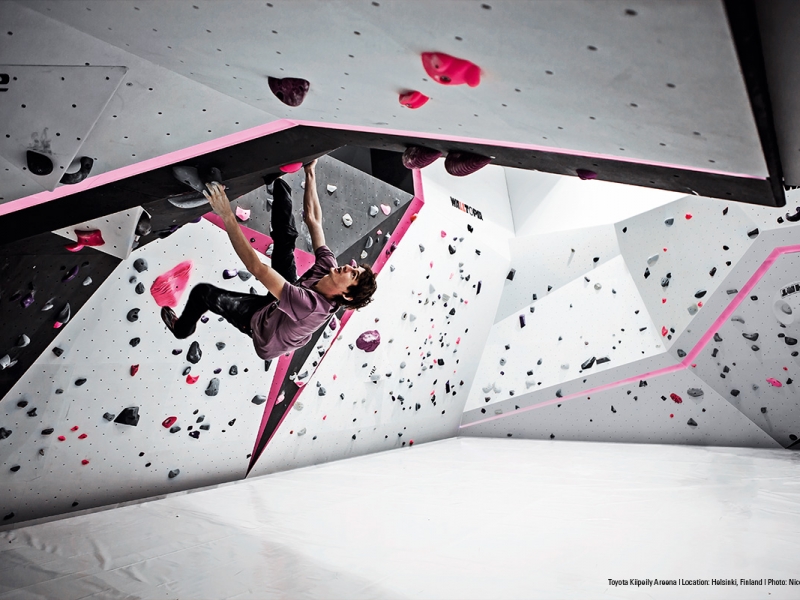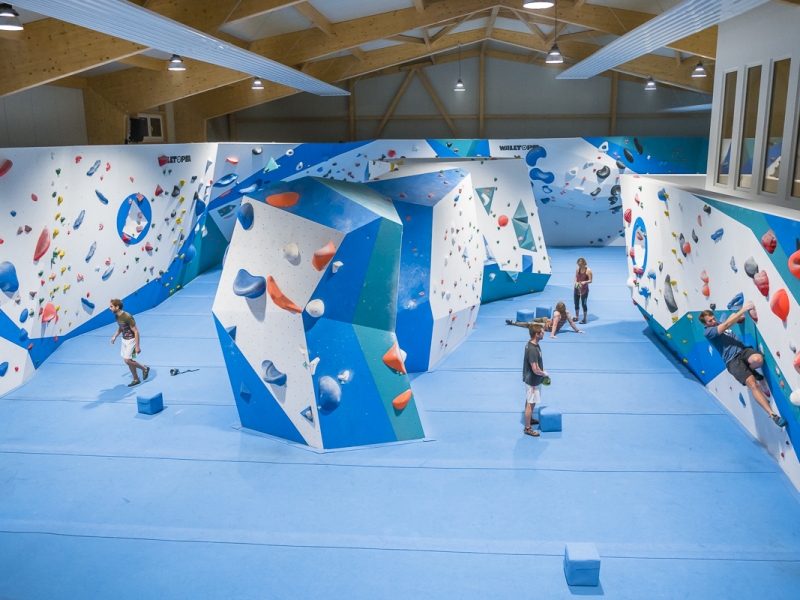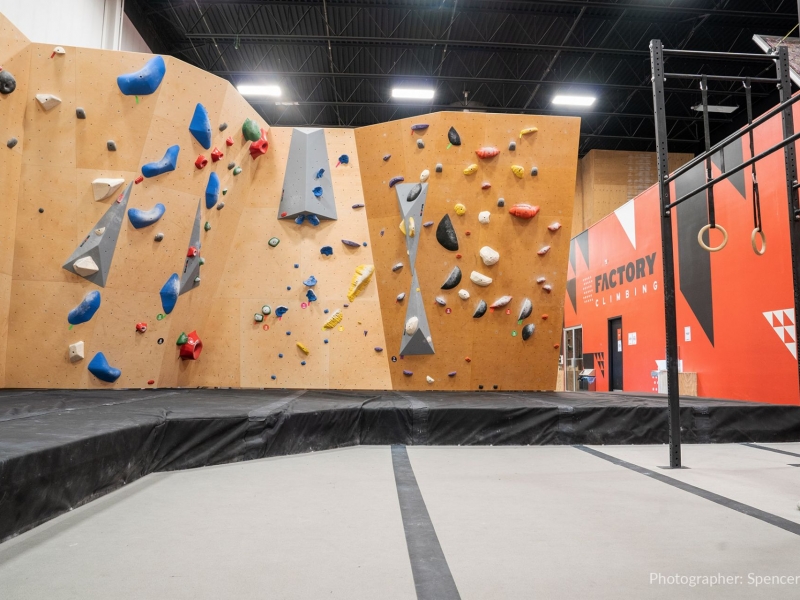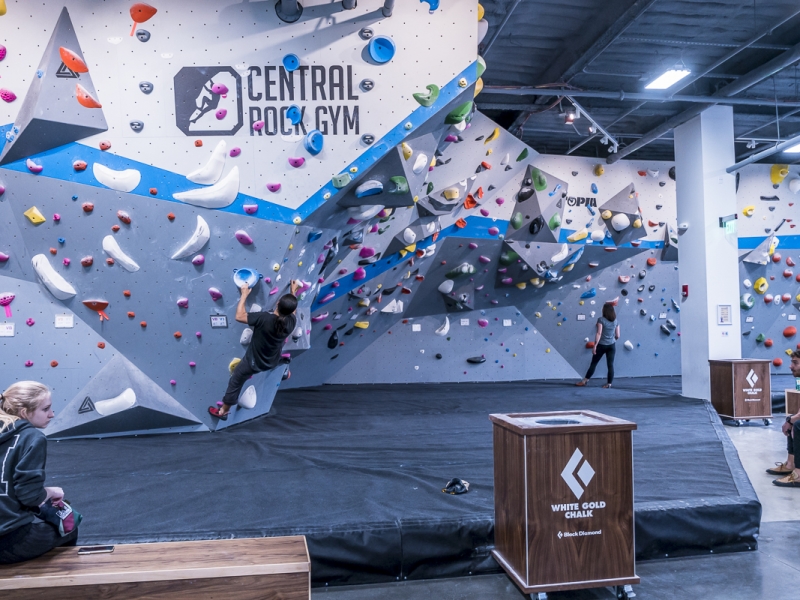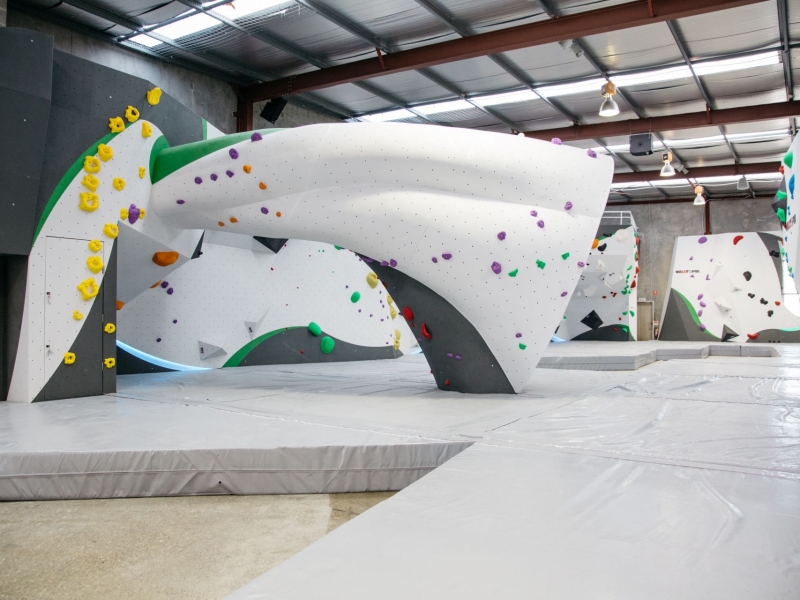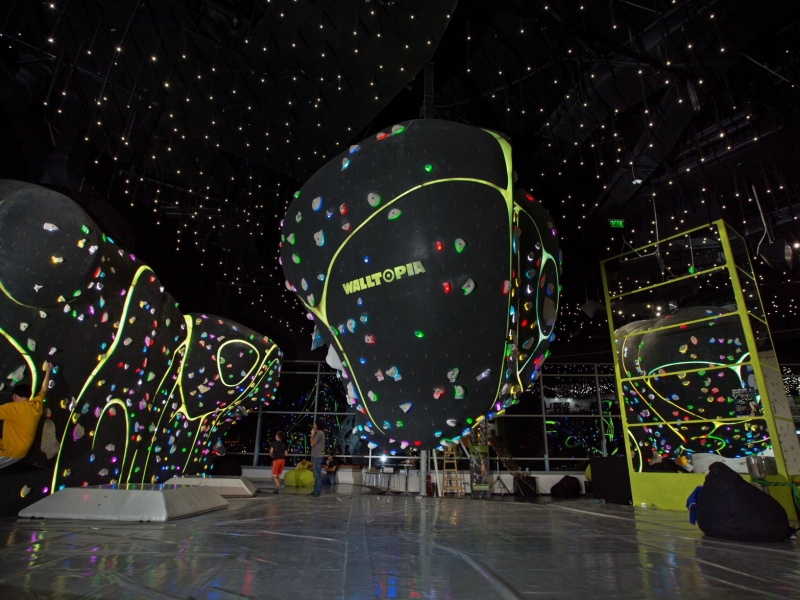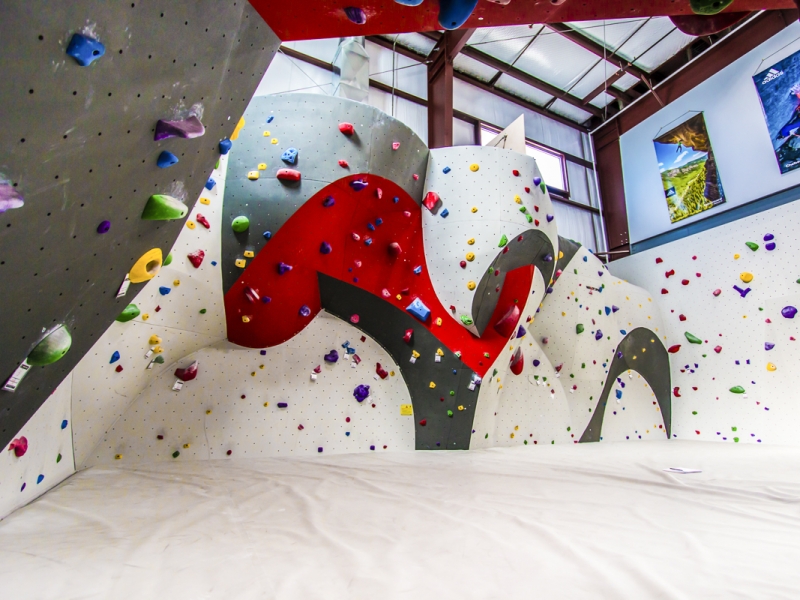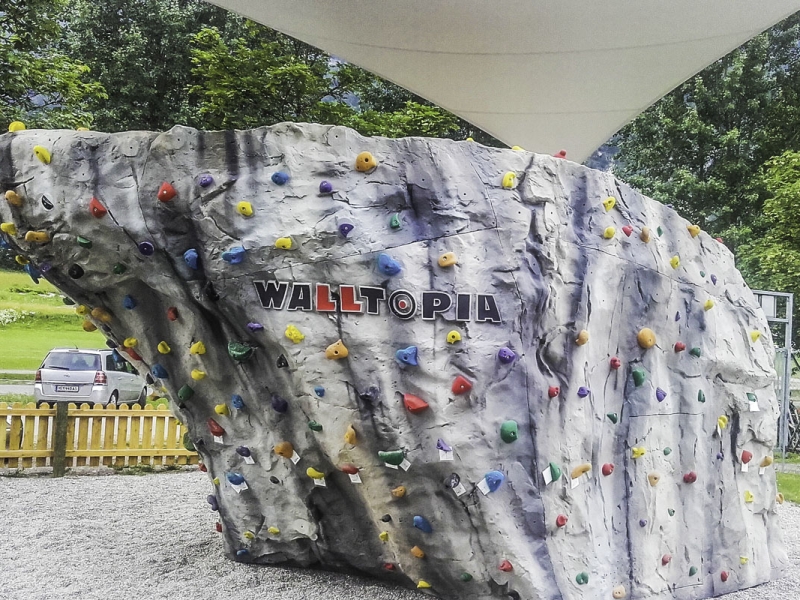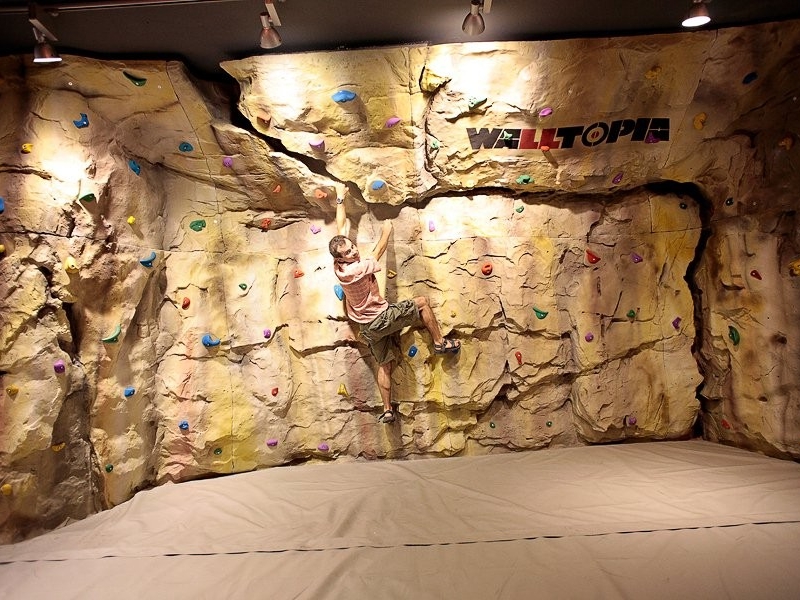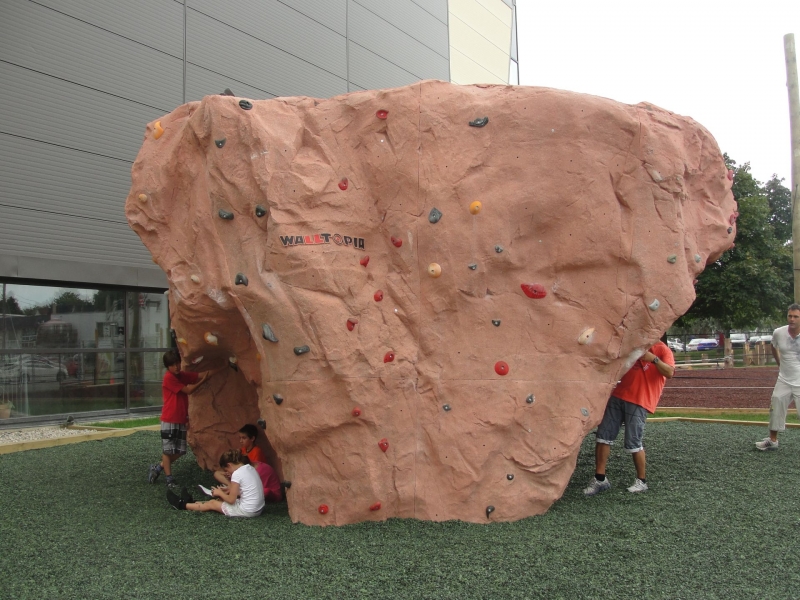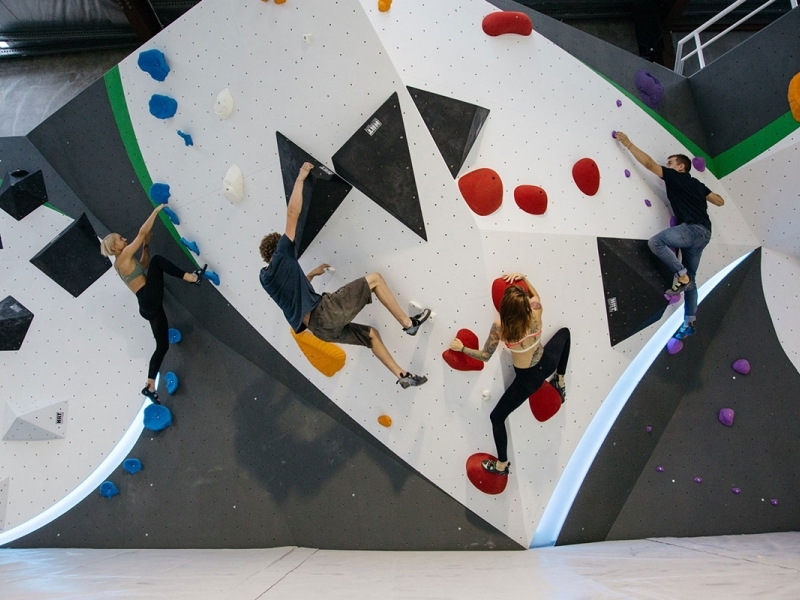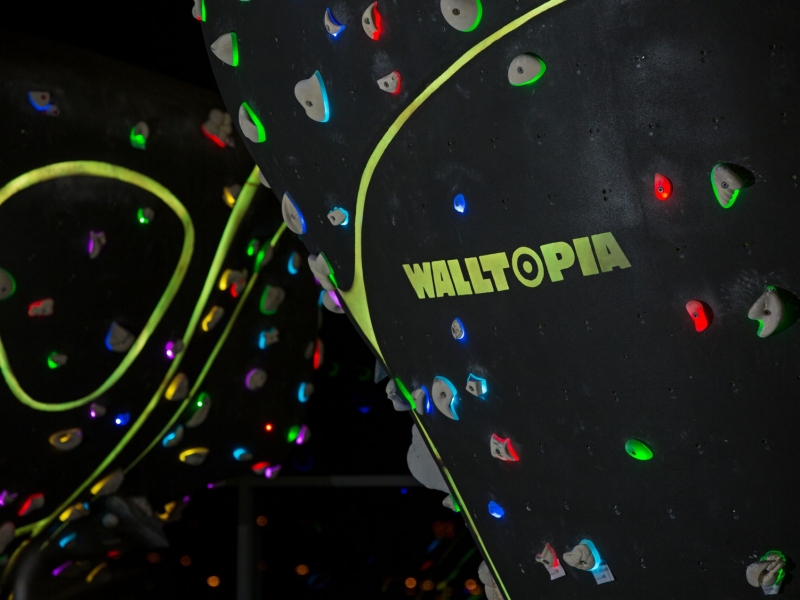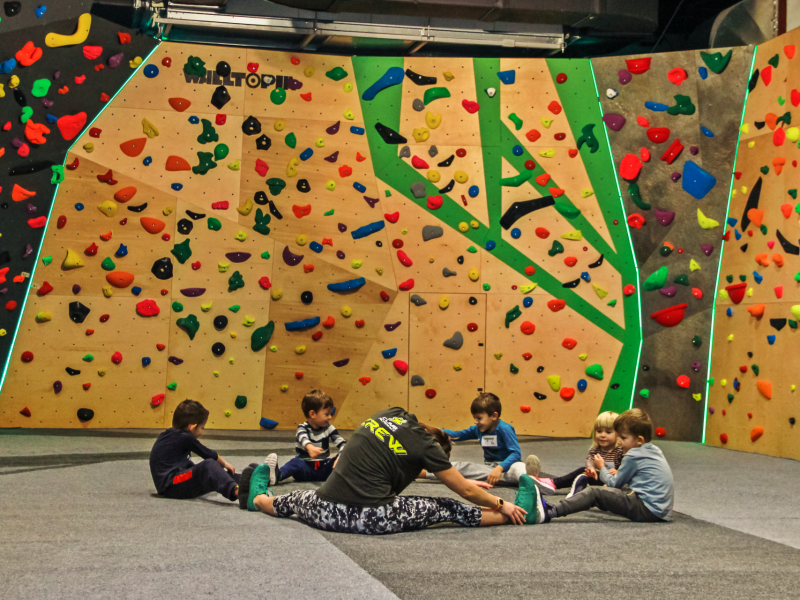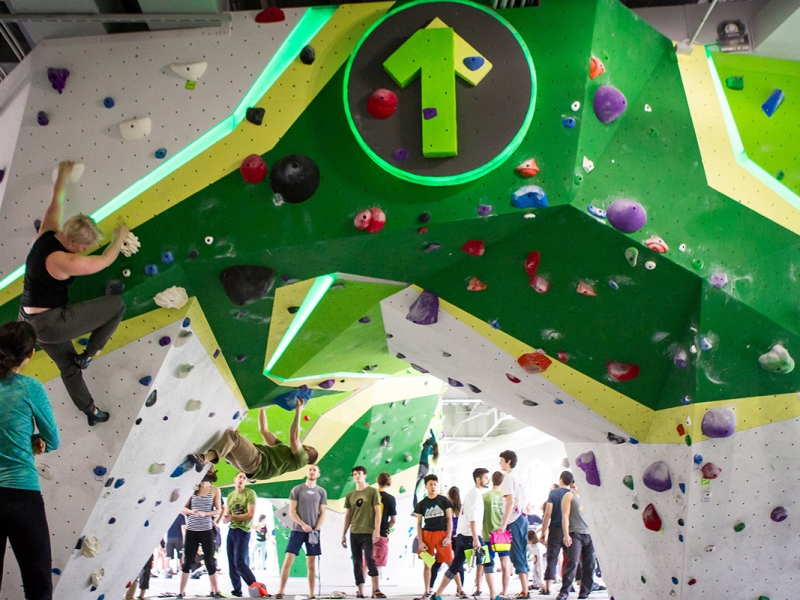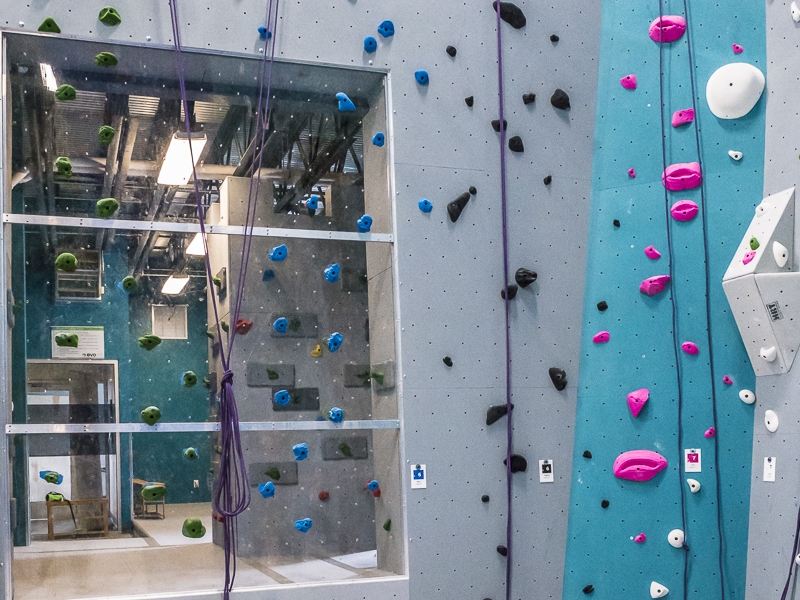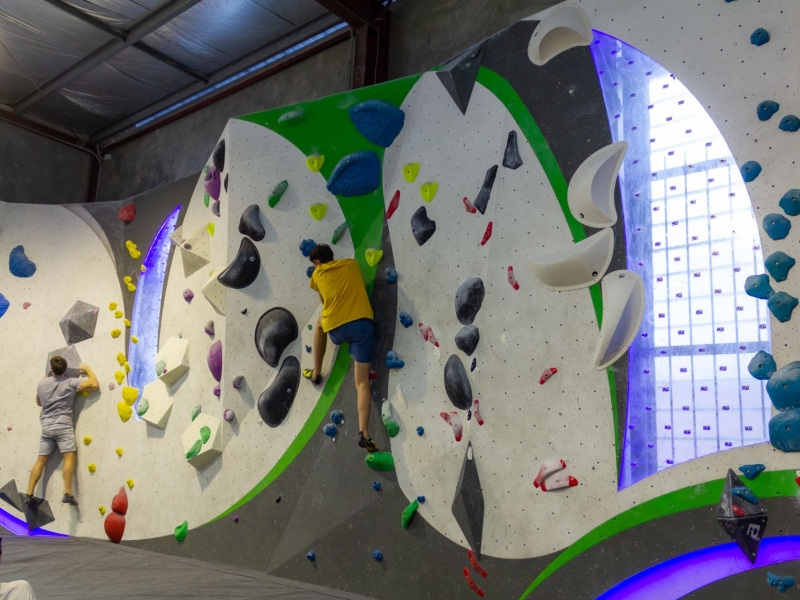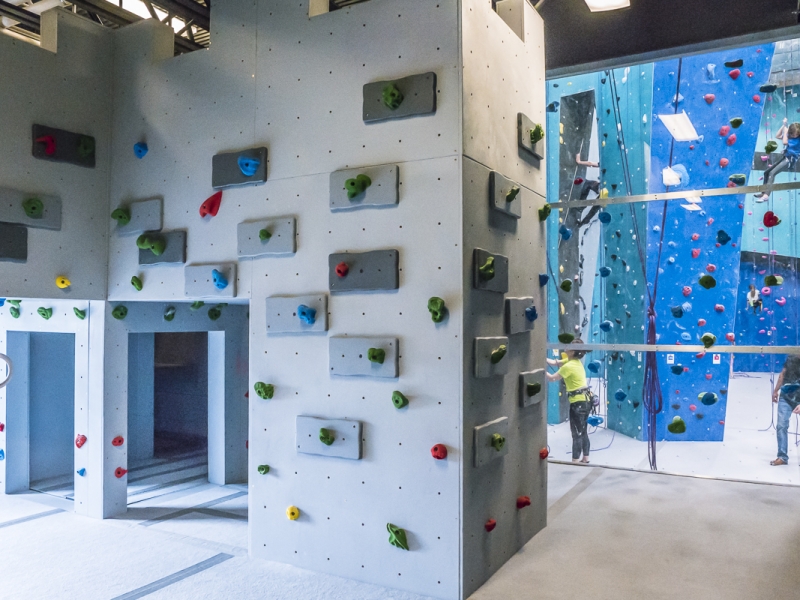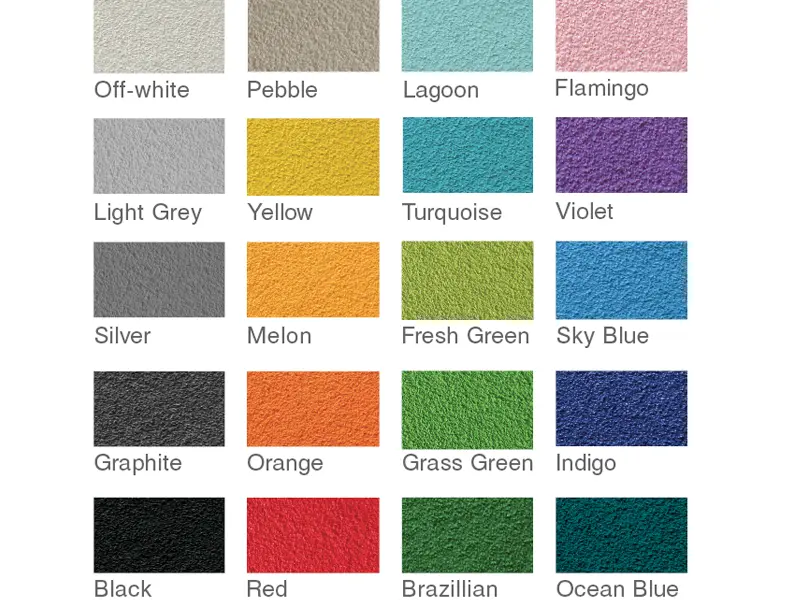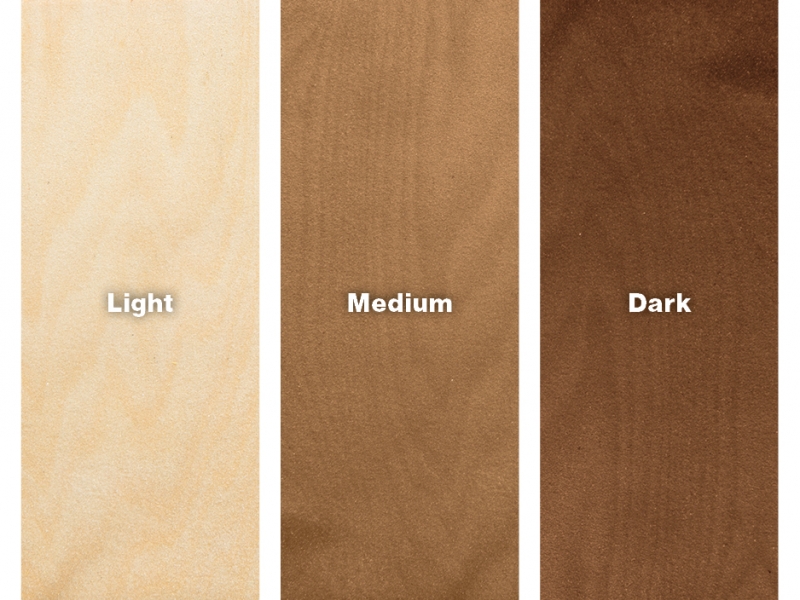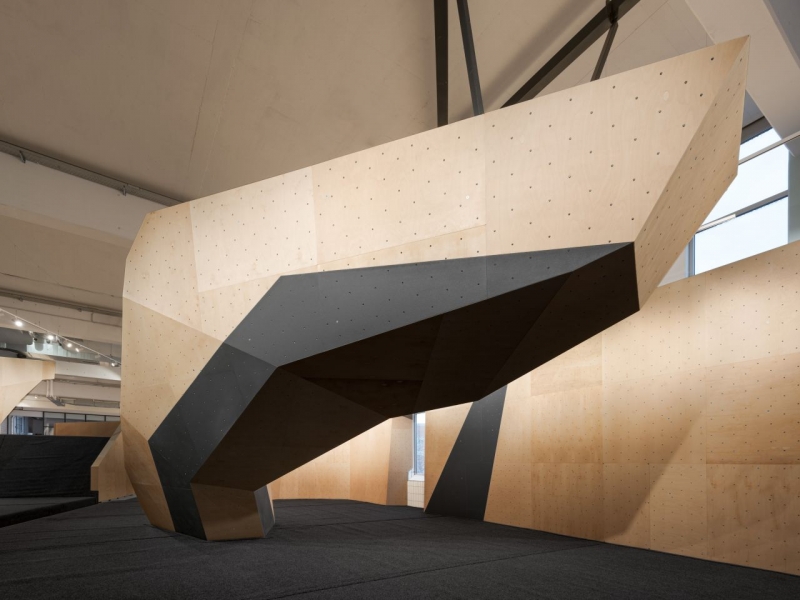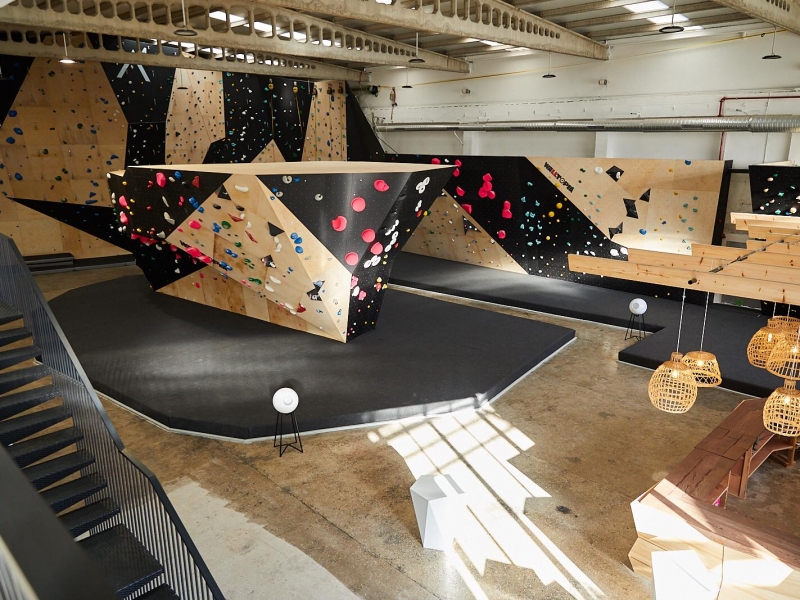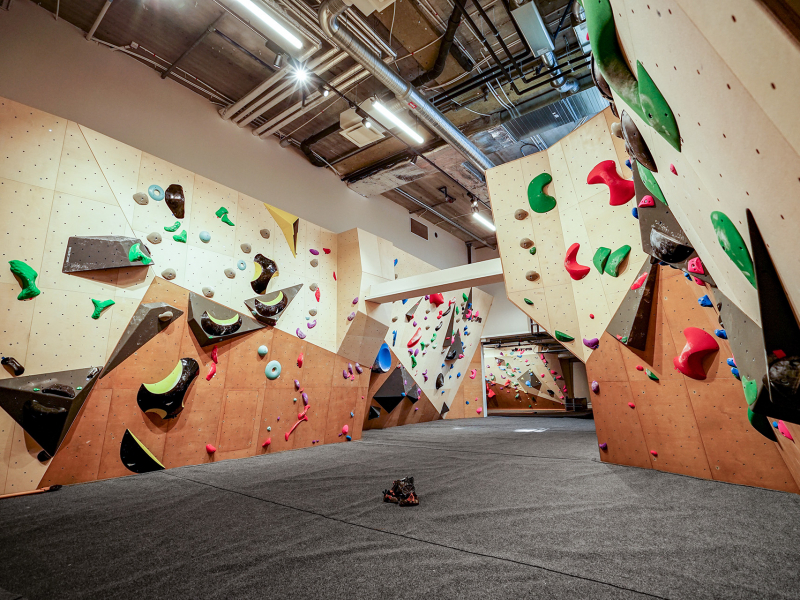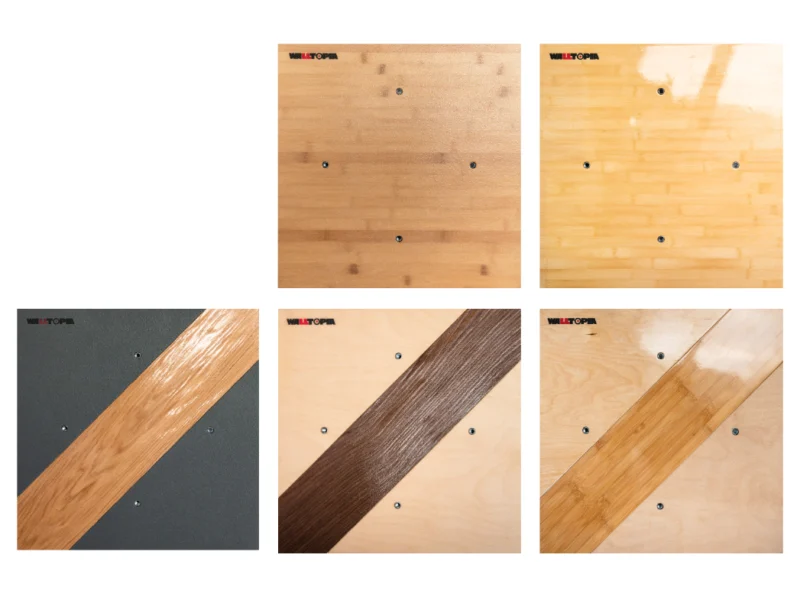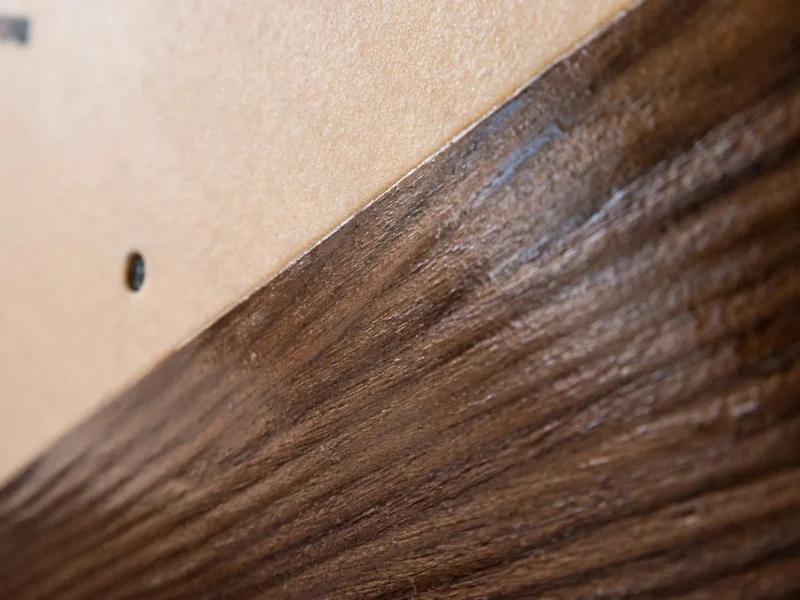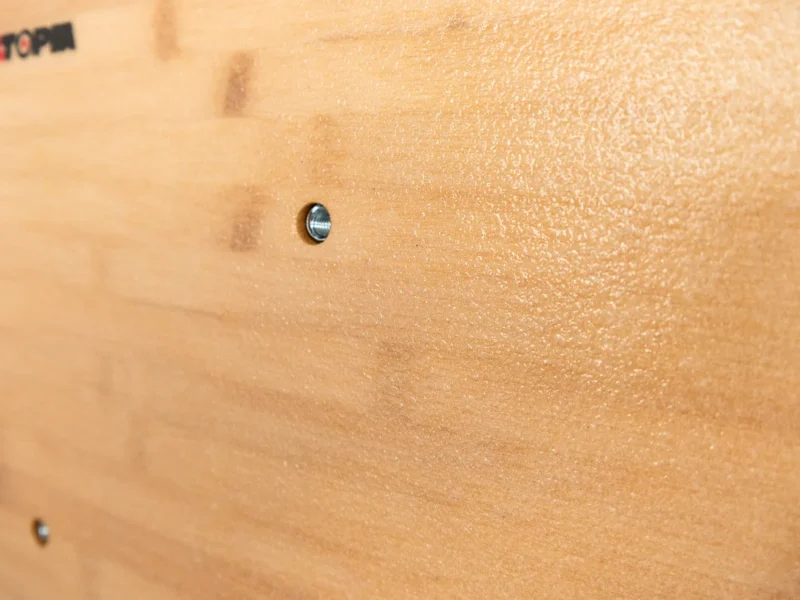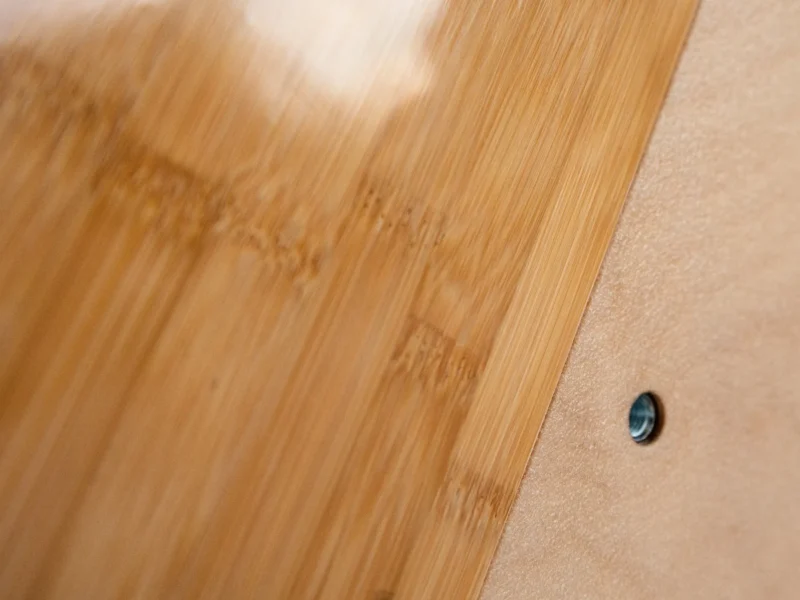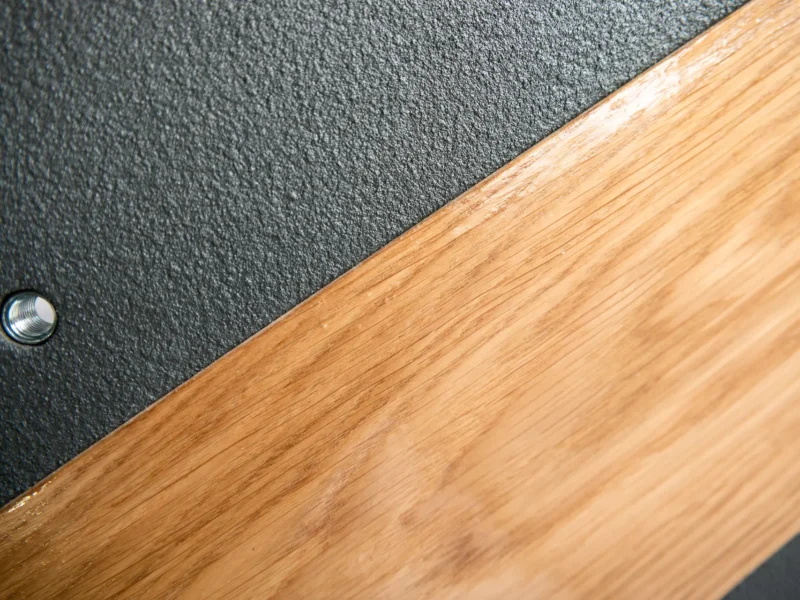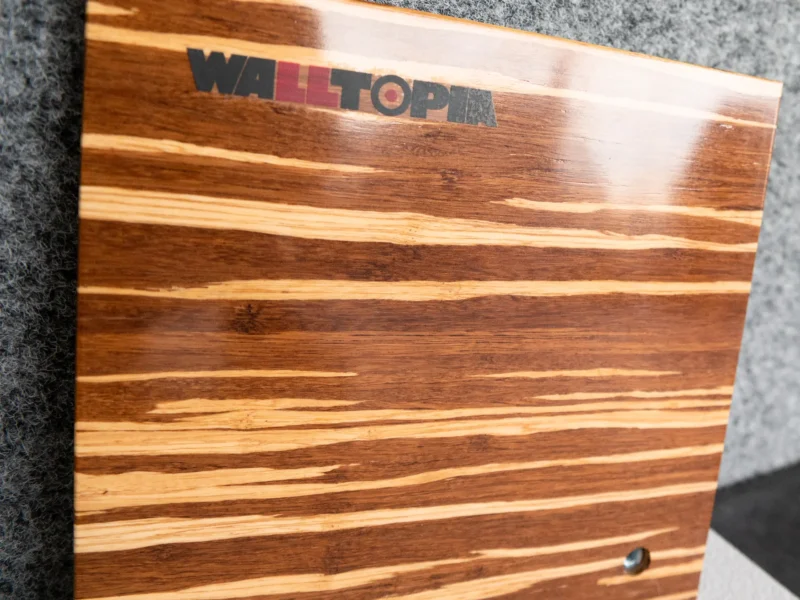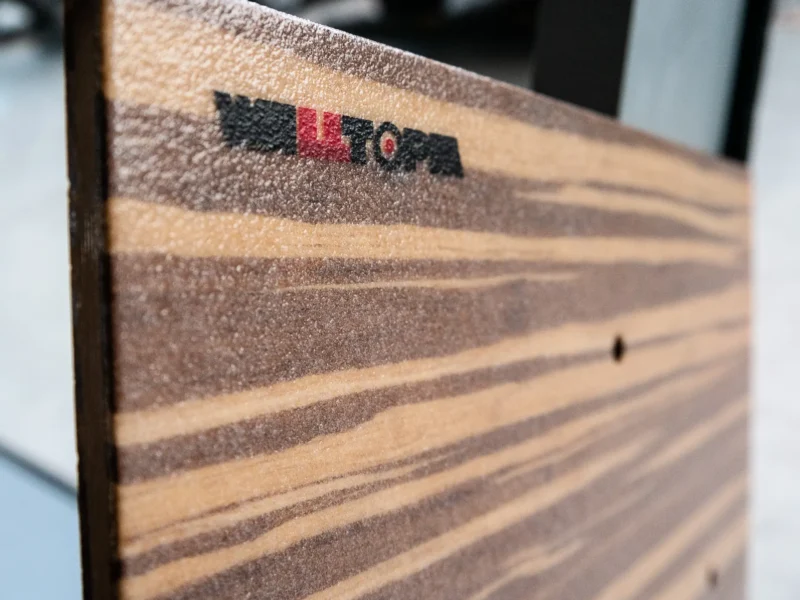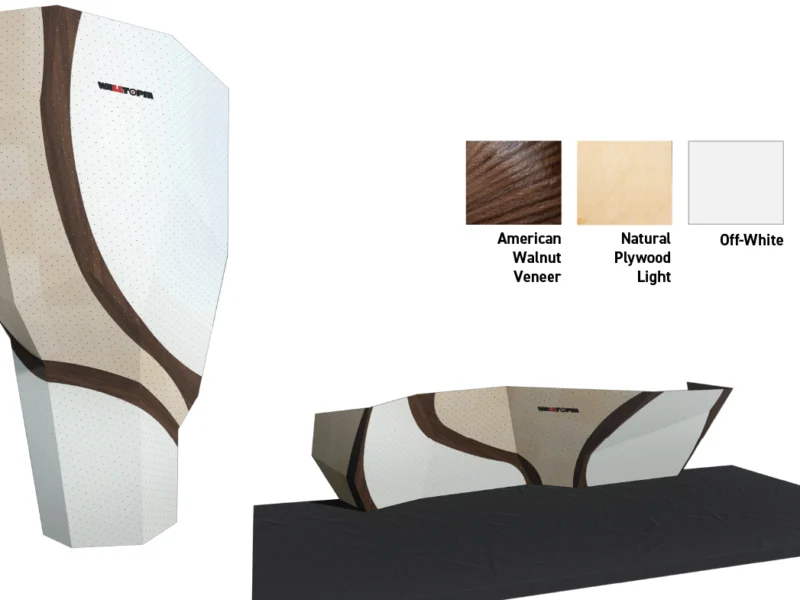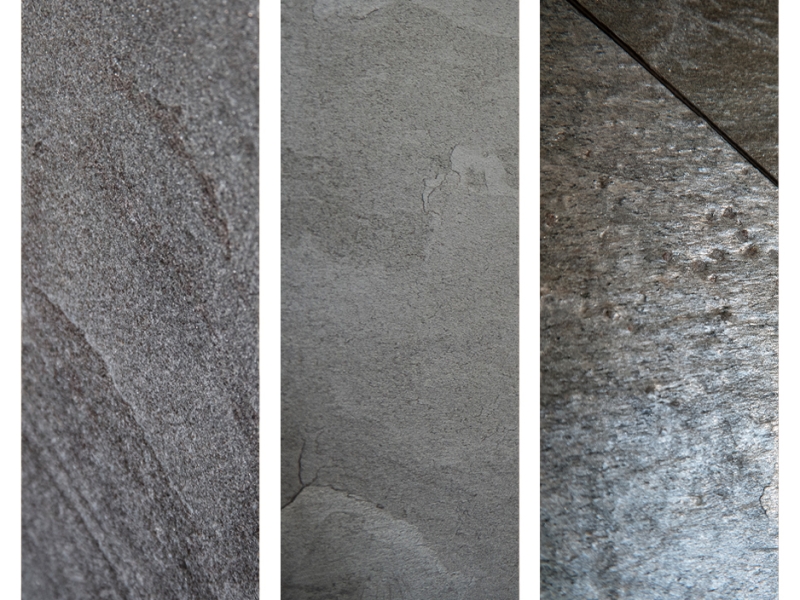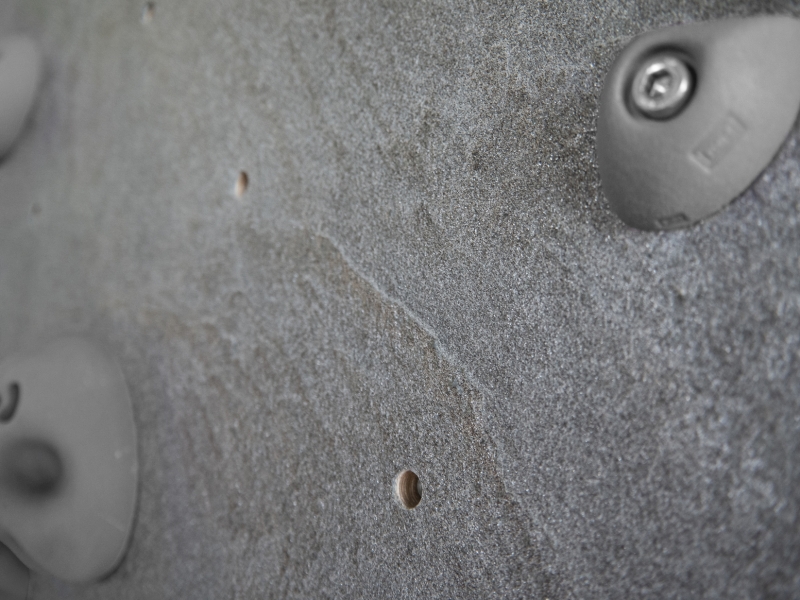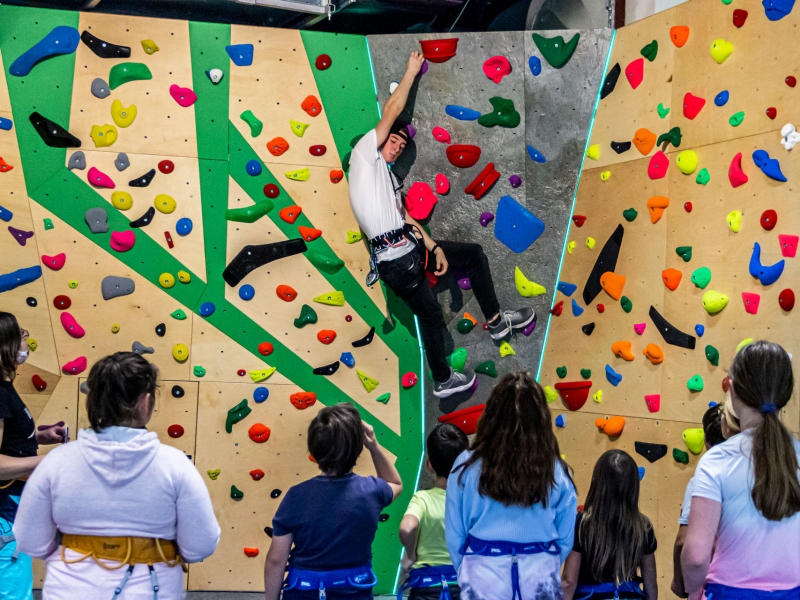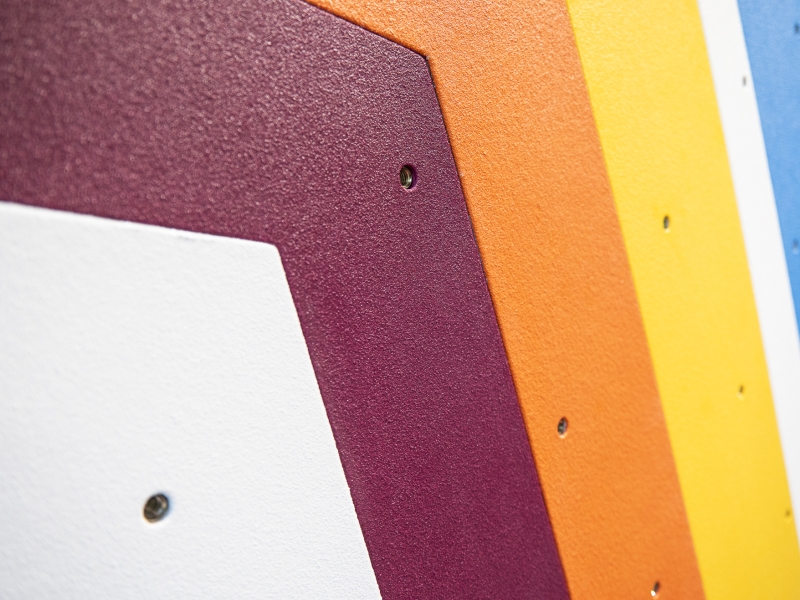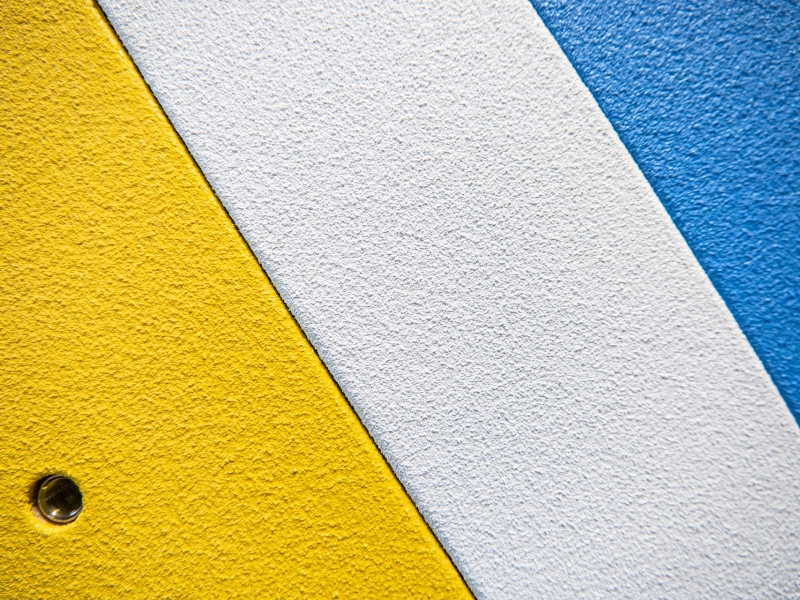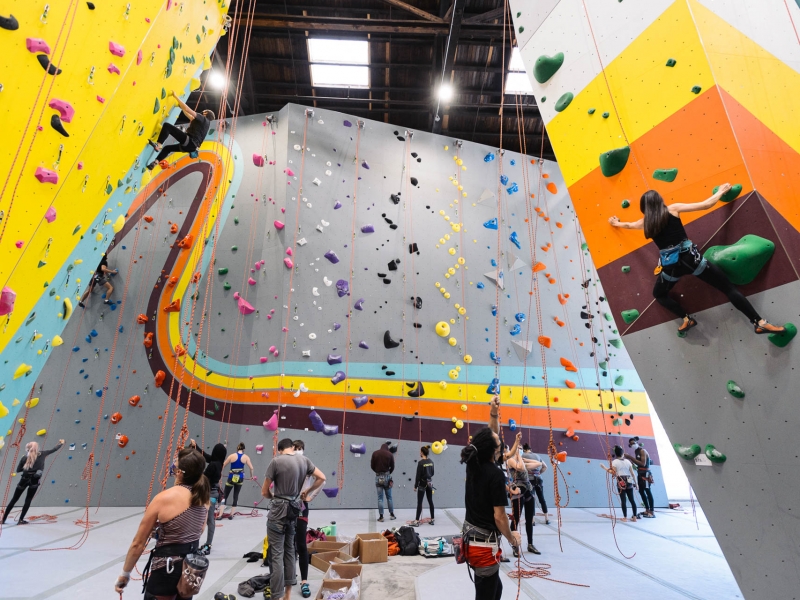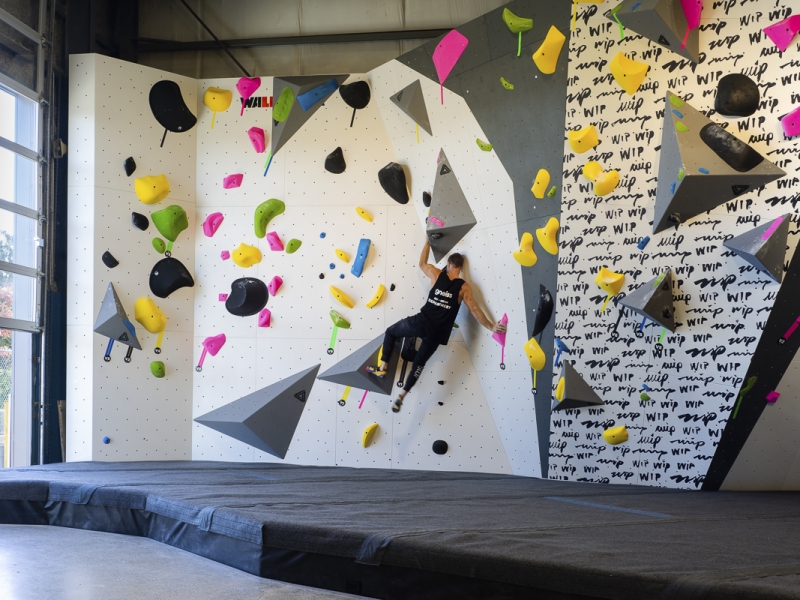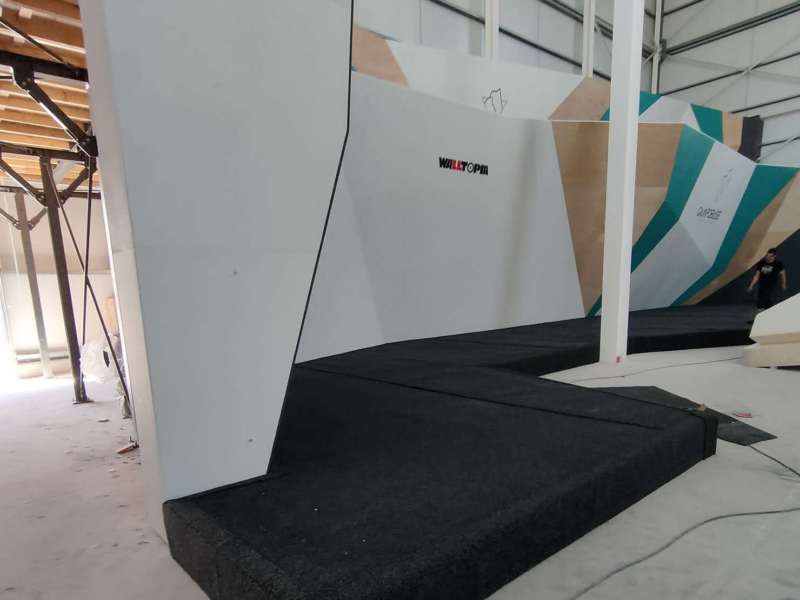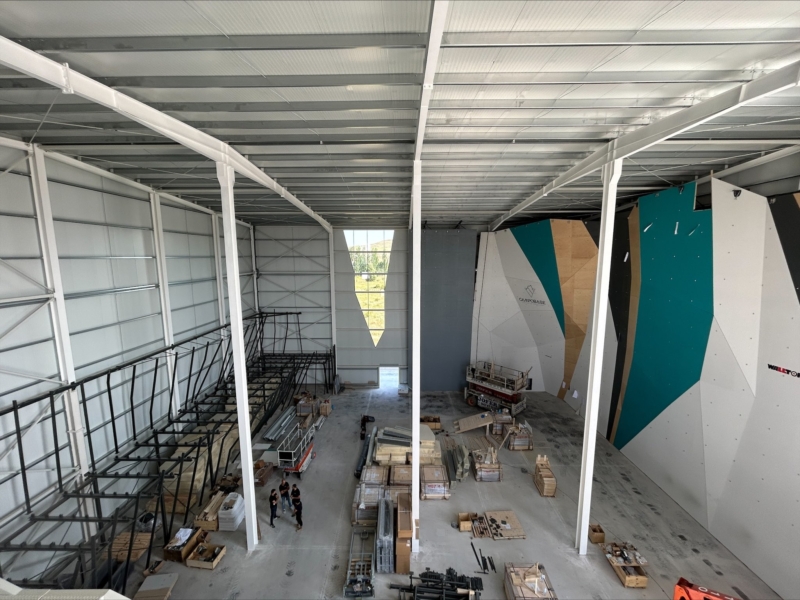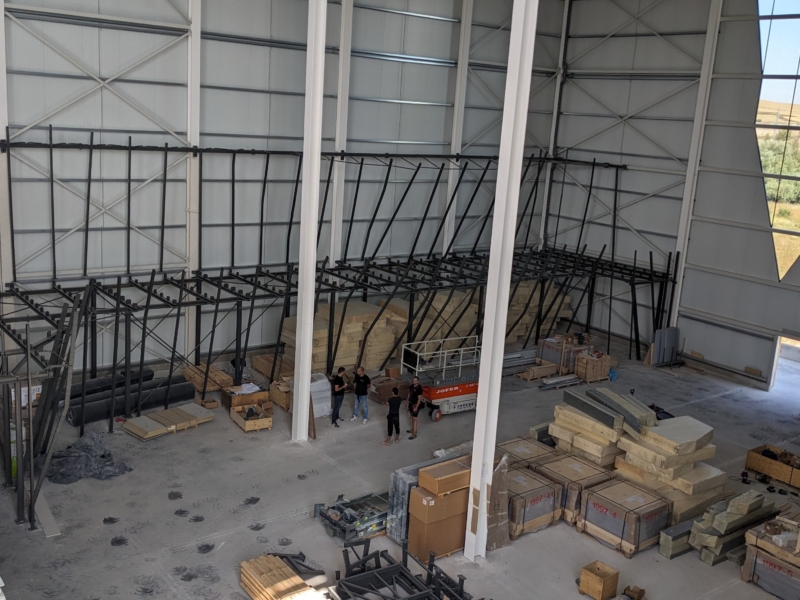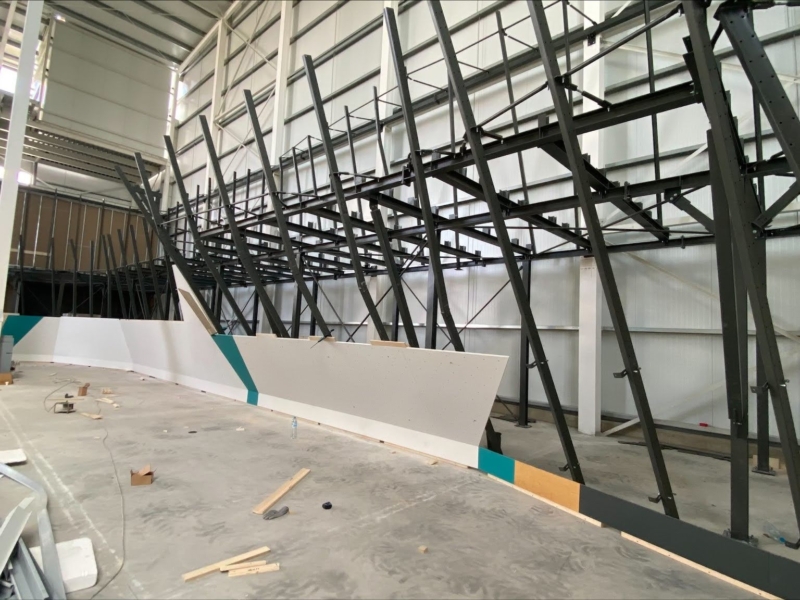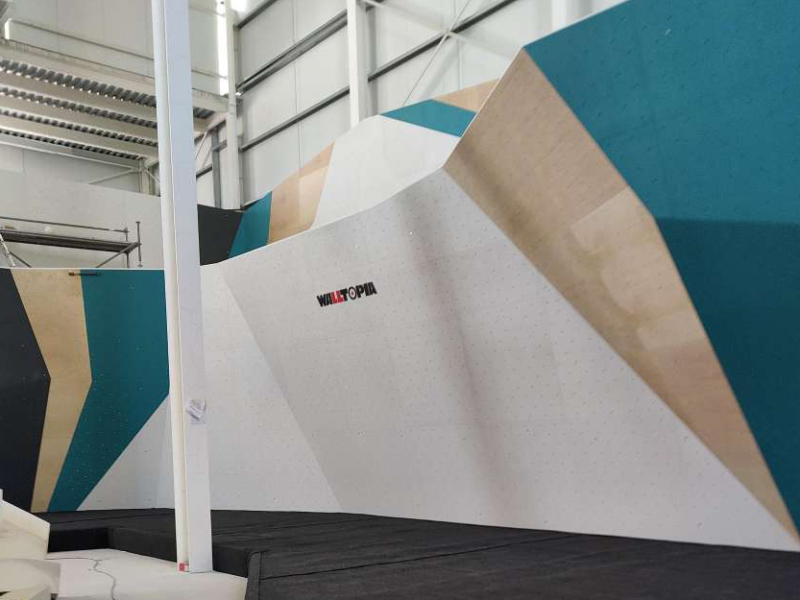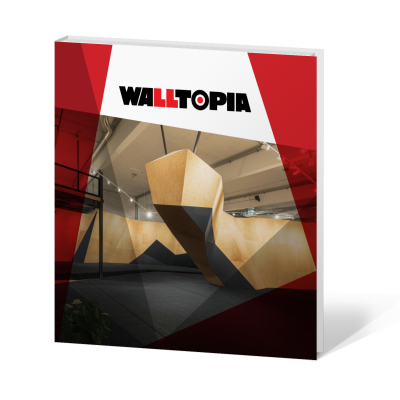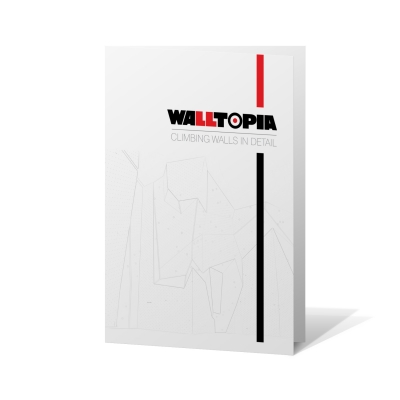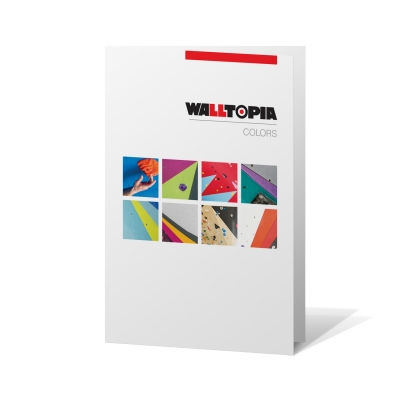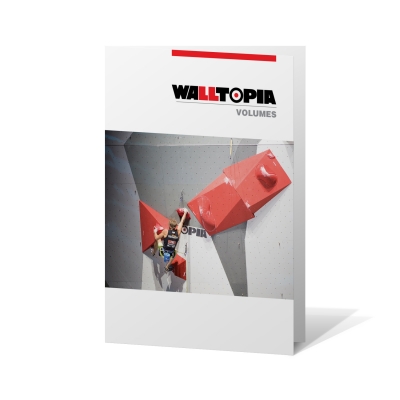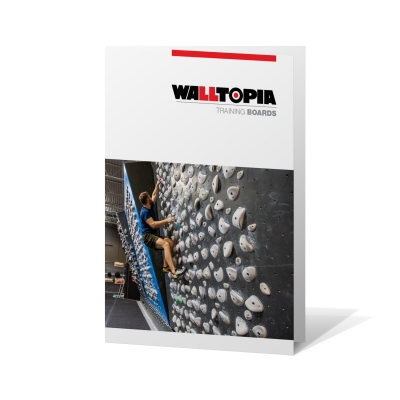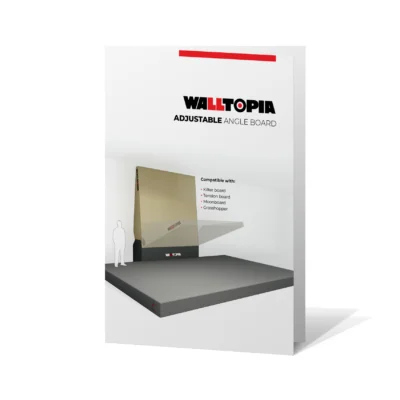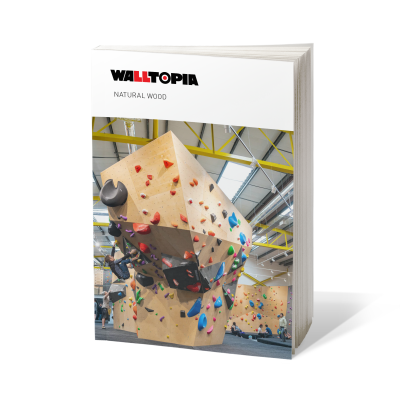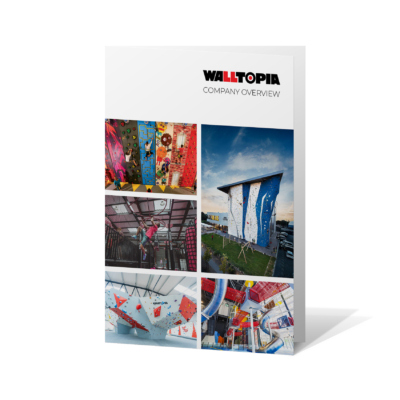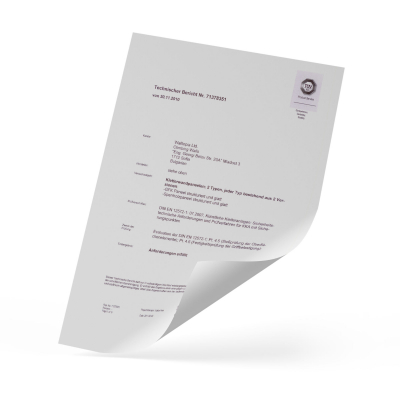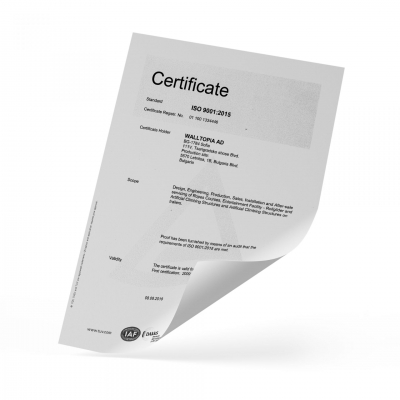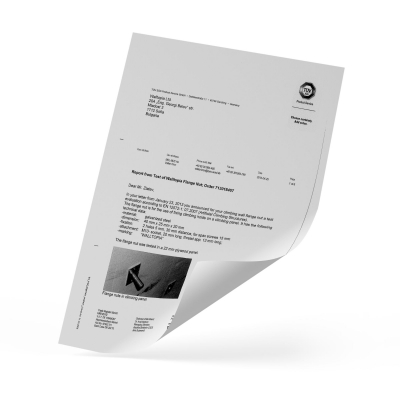About
Walltopia designs and manufactures bouldering walls since 1998. A team of skilled designers and architects creates custom design offering endless variety of shapes, angles and special features that can be used to match any appearance and functionality a client can imagine for their climbing facility. Professional engineers calculate and make sure that the completed project will come out as designed in a safe and precise manner. All climbing walls can be adapted for both indoor and outdoor use.
Height Requirements
Min. height
The recommended minimum height for the climbing walls at a bouldering gym is 3 m (10 ft) in order to make a sufficient training facility. This requires a minimum ceiling clearance of 3.5 m (11.5 ft) for the building that will house the facility. Less than 3 m (10 ft) bouldering walls are only recommended for kids bouldering area.
Max. height
The maximum height of a bouldering wall considered safe is 4.5 m (15 ft) which would require a location with at least 5 m (16.5 ft) clear ceiling height.
How do we calculate
Roughly, add 0.5 m (1.5 ft) on top of the desired bouldering wall height in order to calculate the minimum ceiling height required. There are many other site-specific factors in terms of architecture and engineering that need to be taken into account (i.e. fire safety systems, ventilation etc.) but this gives a general idea about what location you should seek for your desired facility.
Steel Structure
The structure of the bouldering walls can be made of steel or wood, with steel being our primary solution. The fact that bouldering walls do not require protection points bearing heavy dynamic loads like rope walls allows for a simpler and lighter structure than rope walls. Steel structures, in particular, have proven to be exceptionally robust and durable, making them a top choice for boulder wall constructions. Compared to other materials, steel exhibits remarkable strength and structural integrity, providing a reliable and long-lasting solution. The versatility and cost-effectiveness of steel structures have established them as the preferred option for climbing gym framing.
The structure can be attached to the building or be self-standing; the latter requires additional engineering, construction time, and a greater amount of materials.
Wooden Structure
Where Strength Meets Elegance
Your Choice Matters: We offer wooden structures for our bouldering walls as a robust alternative to our traditional steel frames. You can now opt for the timeless appeal of wood or stick with the reliability of steel. If some parts of the structure remain visible, the choice of wooden structure for boulder walls could add natural aesthetics to the interior design of the gym. It is up to you!
- Structural questions and capabilities can be determined during the design phase when we have the full information about the building attachment options.
- Note: Wooden frames come at a higher cost than steel
Panel types
The climbing wall panels can be made of plywood or fiberglass depending on the design style and functionality they have been designed for.
Plywood panels
✓ Made of strong birch plywood
✓ Water resistant coating available
✓ Available in flat or carved surface
Fiberglass panels
✓ Made of fiberglass and polyester resin
✓ Completely waterproof
✓ Durable, yet very lightweight
Panels friction
The perfect amout of friction is key for the send
Assessing the friction levels of climbing surfaces is a subjective matter, often giving rise to differing opinions among climbers. When ten climbers evaluate the same texture, we can expect ten different responses: some will find it fine, others slippery, and still others too rough. Despite this inherent variability, we’ve managed to design a climbing wall surface that consistently gets the highest ratings from customers.
To further enhance the climbing experience, consider the option of dual-textured climbing walls. These walls seamlessly blend friction textures and smooth panels. Our specially designed Walltopia panels offer a unique challenge to climbers on certain sections of the wall. This strategic incorporation of varied textures ensures a well-balanced and appealing experience for climbers of different skill levels and preferences.
Panels Wear Resistance
This is an incredibly important property of the texture since it’s the part with the highest depreciation rate and defines the facility’s life expectancy. We believe the texture shouldn’t wear off and should also keep its vivid colors for no less than 20 years. In order to control this process, we created a special procedure for the rapid testing of texture fatigue.
Panels UV Resistance
Climbing walls are often exposed to direct sunlight so we use UV resistant coating for the finish layer of the panels in order to preserve the vibrancy of their colors and prevent them from fading. Most manufacturers assume that climbing walls will be installed in enclosed spaces with no direct sunlight around, which is why they use non-UV resistant epoxy coatings. We prefer to assume the opposite – that all the walls we produce could be installed in a place with direct sunlight, which is why we’ve set the standard of using UV resistant materials for our products.
Dirt Resistant Coating
To preserve the longevity of the wall colors by implementing measures to protect them over an extended period and maintain it clean, we have developed a special dirt-resistant coating that prevents climbing shoe rubber from sticking to the surface. However, due to the nature of the materials – soft rubber in contact with hard abrasive surface – and other factors such as overall cleanliness, walls do get dirty over time. Our texture allows for easy cleaning and maintenance of the wall surface.
Maintenance Recommendations
To take full advantage of our dirt-resistant coating, please follow our recommendations:
✓ Use carpet covered flooring
✓ Clean the flooring on a daily basis
✓ Do NOT use alcohol-based detergent on the flooring or the walls. Alcohol based detergents dissolve the rubber on the climbing shoes, make it much more stickier and thus leads to dirty walls.
Rounded corners
The corners where climbing wall panels meet to form a positive relief are often quite sharp. We have discovered that making the edges of these panels rounded not only protects climbers and gives them a softer grip, but also makes the corners more resistant to damage.
T-nuts strength
The only requirement the standards include regarding the t-nuts is about their breaking point (according to Annex E). We believe this is not enough. Our t-nut is securely fastened to the wall panel with two strong screws, ensuring it stays firmly in place even in the event of hold installation failures.
T-nuts distribution
We make sure there are always enough t-nuts around the corners so that the wall makes no compromise with the routestting opportunities. Competitor producers connect the plywood panels via wooden pieces and putting T-nuts on the corner is not possible because of this. We have a solution to this and we can place t-nuts close to the edges and corners.
Grab Line
The grab line ensures a comfortable grip at the end of the route. This element isn’t required by any climbing standards but we consider it obligatory and it comes as part of our standard package.
Design Styles
Geome3x
Walltopia's most popular style
- Polygonal multiangled planes provide an endless variety of three dimensional design possibilities with clean and minimalistic appearance.
- Limitless range of color combinations give every climbing wall a unique and distinctive look.
- Flat surface panels allow for a great t-nut density and plenty of route setting options.
- Geome3x can be manufactured for both indoor and outdoor use.
- The panels can be carved to achieve micro relief.
- Geome3x is the most economically efficient solution, providing everything a gym needs at a reasonable cost.
3D Curves
Make your space stand out
Inspired by the famous sandstone canyons of Utah and the boulders of Fontainebleau, 3D curves fills the gap between architects’ imagination and the technical restrictions of plywood panels.
- Often used in combination with plywood walls to create a signature feature in the climbing gym.
- Made of fiberglass: absolutely no restriction in terms of shape.
- Appropriate for both indoor and outdoor use. Highly durable.
- Without micro relief, high T-nut density can be achieved and route setters can make the best use of the space available.
Although aesthetically pleasing, curved forms pose restrictions on routesetting as they are not suitable for big holds and volumes and that should be taken into consideration when creating 3D curves features.
Rocktopia
Rocktopia is our way of going back to the roots of rock climbing. These are walls that resemble real rocks. To ensure the natural feel, the molds that shape the fiberglass panels have been casted from real rocks at our home iconic crags.
Rocktopia provides a great variety of rock features with various relief that can present a challenge to both beginners and advanced climbers. The surface can be high or low relief depending on the desired level of difficulty. The neat placement of the holds is achieved by our flat underhold technology that minimizes the risk of hold breakage. Although there are no restrictions in the color options, we recommend the realistic rock look – the different hues of limestone, granite or sandstone.
Besides climbing walls, the Rocktopia features can be used to create artificial rocks and boulders for urban outdoor environments such as parks, recreational areas and zoos.
Rocktopia rock types:
• Limestone
• Sandstone
• Granite
Additional Features
LED Add-ons
Enhance the appearance of your wall by incorporating built-in LED illumination into the outfit. Elaborate the design of your gym with custom shapes that can glow in any color using RGB LEDs. The features currently offered are LED cracks, LED strips and LED band and can be incorporated in any climbing wall design style.
Plexiglass Features
Make a section of your climbing wall transparent with a piece of plexiglass that is actually climbable. Whether serving as a window or purely a design element, integrate small plexiglass sections seamlessly with plywood or fiberglass panels. To keep it transparent, texture cannot be added, so keep in mind that the friction would be restricted in that section.
Standard Colors
One of the most important details of a climbing wall is its color scheme, as it affects the entire atmosphere of the gym. Walltopia uses a standard palette of 16 colors, which allows for numerous color combinations, clever compositions and creative interior designs.
Natural Wood
The natural wood panels harmonize with solid color sections, forming an aesthetically pleasing blend that not only fosters a cozy atmosphere but also maintains an identical level of friction as found in all Walltopia walls. The rubber resistant coating will make it easy for the operators to maintain a good looking wall over time.
Walltopia natural wood comes in three shades: light, medium and dark
Natural Wood Veneers
Natural wood veneers add another dimension to the climbing wall design. Our designers work with a large selection of veneers, ask your contact person for the current availabilities and pricing. A popular approach is the combination of a light natural plywood with dark American wallnut veneer.
Natural Stone
The natural stone panels are a great signature element in the design of a climbing gym. They look attractively in combination with solid color or natural wood panels while providing a cozy earthy atmosphere. Extracted from real rock, the climbing wall panels with stone veneer not only look but also feel like real rock because they are…well, natural stone. Walltopia natural stone comes in a variety of textures and shades, ask your representative for the current availabilities.
Custom Paint & Split Color
Want more colours on your wall?
Think of any combination and we can make it happen. With Walltopia’s custom paint you can have a number of different colours outside our standard range. Our Custom Color Split technology allows for creative forms in the climbing gym design no matter the complexity of the shapes on every single panel. Our technology allows for unlimited design opportunities, perfect consistency on every single panel and superb execution.
Climbmat Boulder Mat
Climbmat is a Walltopia partner dedicated to flooring solutions for climbing gyms. Climbmat presents their Bouldering Mat featuring new multi-layer design that allows for perfectly uniform stiffness along the whole mat. Multiple impact tests conducted by our R&D scientists, show that the mat dissipates over 85% of the energy of the fall. Thus providing a softer impact for the climbers. Fully compliant with the new EN 12572-2 standard, the new boulder mat is an excellent choice for a flooring solution for any boulder gym.
Mezzanines
Mezzanines are a great way to use higher ceiling space in the bouldering zone and fit in more boulder problems at a smaller footprint. The top of the lower boulder walls serves for the landing zone of the upper ones thus saving floor area. We build the mezzanines entirely with the climbing wall structure and plywood. They are designed for longevity and precisely calculated to withstand the required load impact.
Browse the images to see the structure of the mezzanine at Campo Base, Spain.
Catalogs & Brochures
